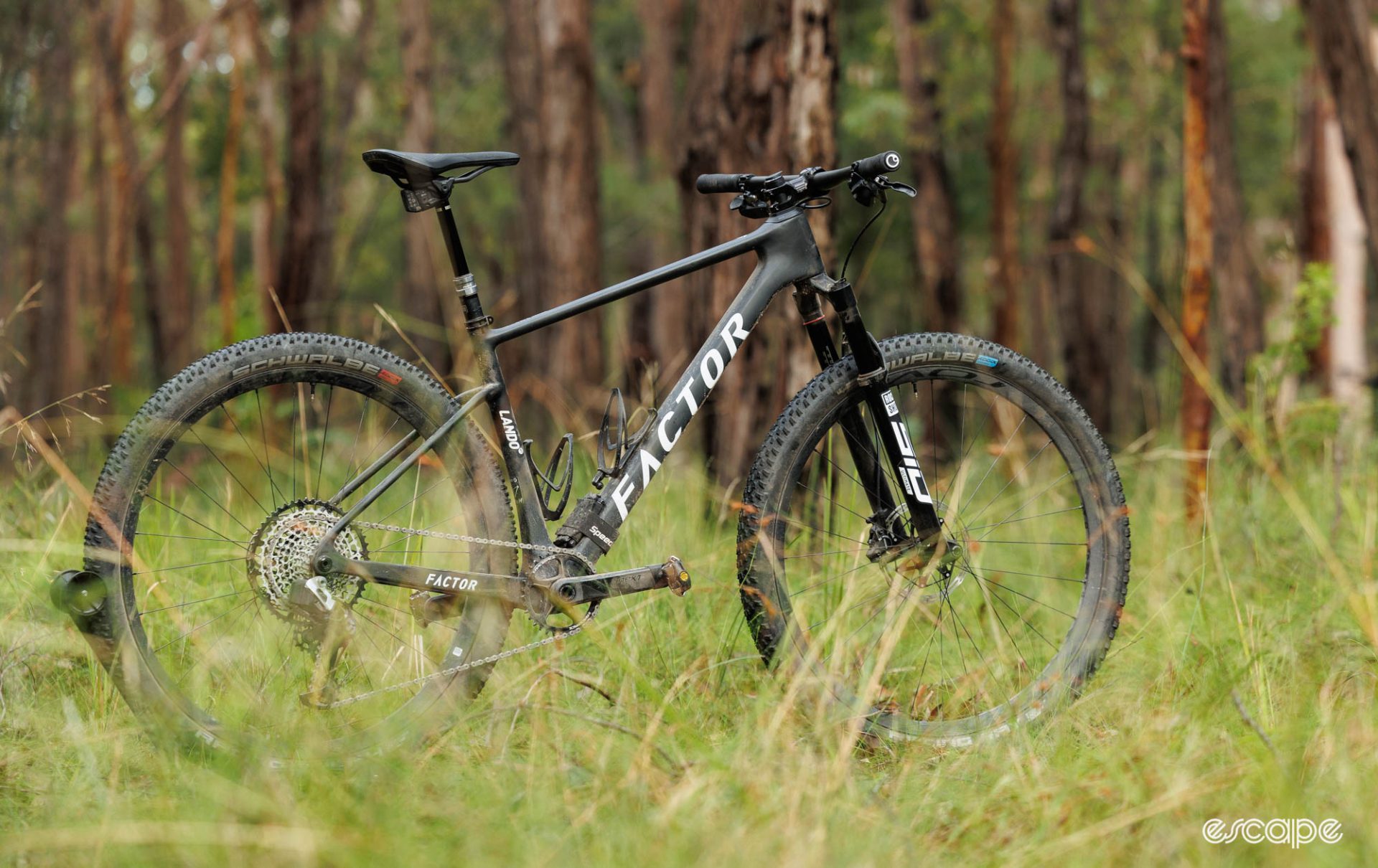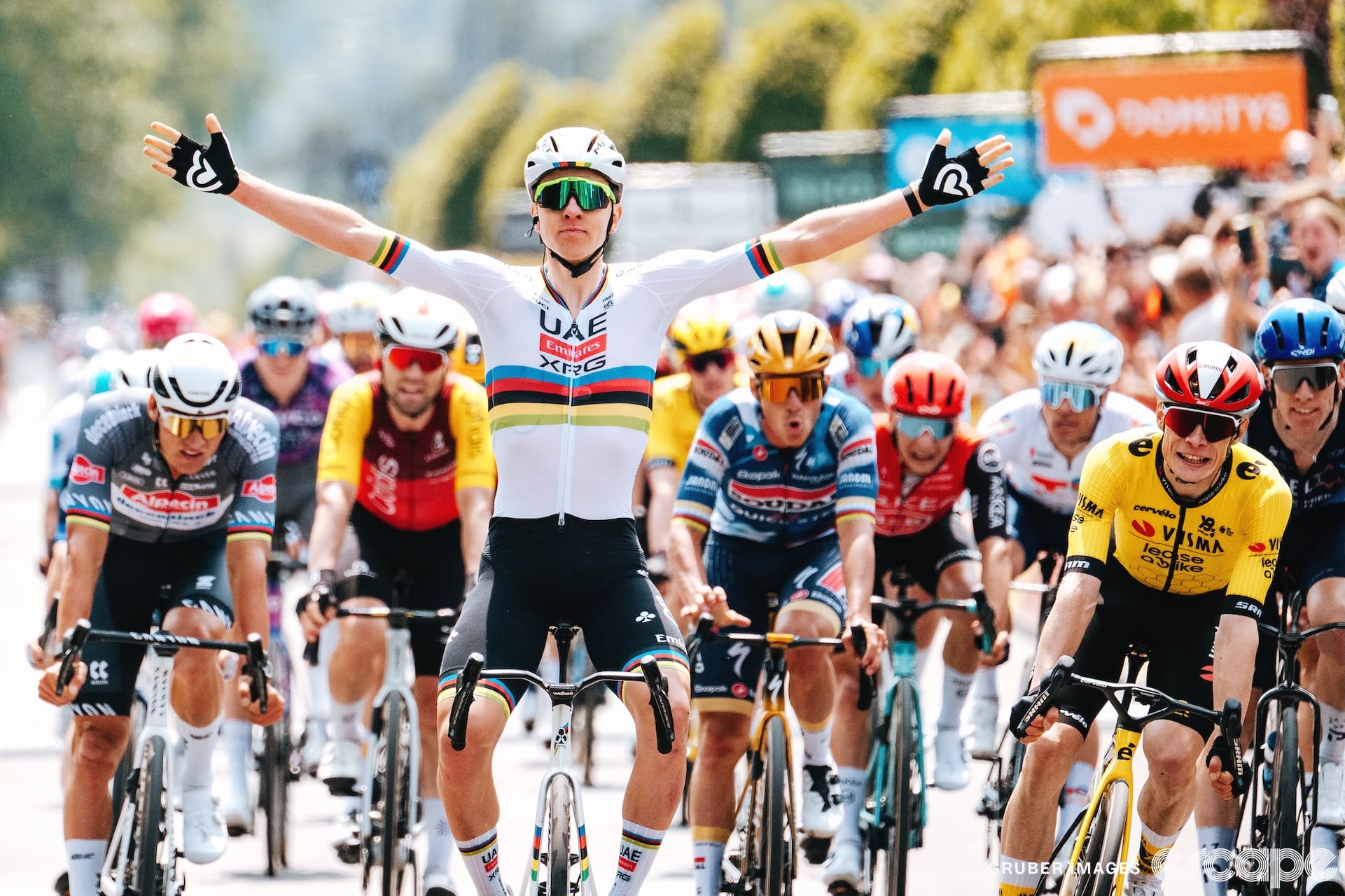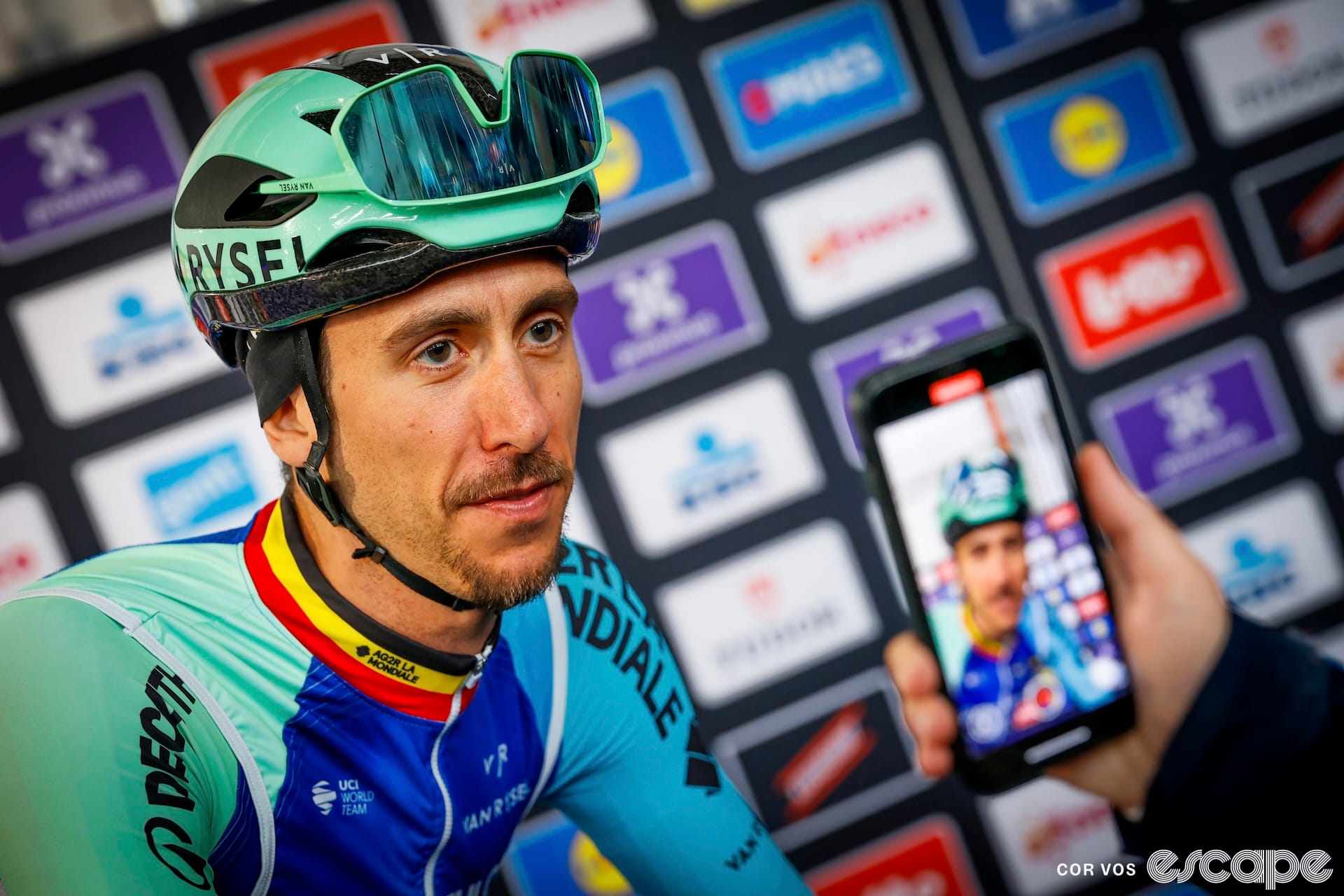Underbiking can be incredibly fun. Conquering a small patch of technical trail on a gravel bike is a hoot. But you know what else is a hoot? Riding, not walking, whatever trail you stumble upon.
Where I live, a great cross-country hardtail can often feel like the perfect gravel bike. Based on the north side of Sydney, I can roll straight out my door and quickly end up on a sprawling network of rough service trails (aka, firetrails) and even rougher single track. And while these trails and connecting roads offer moments for gravel bikes to rule, a good mountain bike often makes me smile even more.
This article looks at my hardtail that I spent much of the pandemic dreaming about and buying parts for. I thought this bike would be the perfect gravel bike, but as it turns out, that’s not how this story ends. I love it, and yet, its days in my collection may be numbered.
My EDC of off-road bikes
Everyone’s idea of an enjoyable gravel ride is different. For me, my ideal gravel ride occurs over a single day, with a great variety of terrain and ideally, some technical stuff to spice things up. It’s what cross-country mountain biking used to be.
Add in the steep, sandstone-based terrain closest to me and a bike with a bit of suspension, wider tyres, and truly low gearing makes sense. Sure there are gravel bikes that tick such boxes, but often, a cross-country mountain bike puts a bigger tick to those boxes.
For as long as I can remember, I’ve typically had a nice, light, and race-ready hardtail in my quiver. Sometimes they were replaced with light dual-suspensions, but then I’d soon find myself owning a hardtail again. It’s seemingly an unavoidable pattern and I don’t think it’s always a rational one. In more technical terrain a hardtail is rarely the most comfortable or fastest tool, but there’s an undeniable satisfaction earned and a magical sense of connection to the trail when you get it right.
Recent years have seen me knock around on a not-too-shabby SwiftCarbon Detroive 29er (now a singlespeed). It’s carbon, it previously had Shimano XTR 11-speed shifting bits, and it features a head angle steeper than most modern gravel bikes. Heck, even the new Giant XTC and Canyon Exceed – two bikes commonly considered on the twitchy end – feel slack and stable in comparison.
I knew what I was missing with that old 29er hardtail, but it wasn’t until I had the opportunity to briefly test a Unno Aora (my dream hardtail at the time), that it all sunk in. That bike didn’t disappoint, and I was immediately blown away by how planted, controlled, and comfortable this rare featherlight race machine felt.
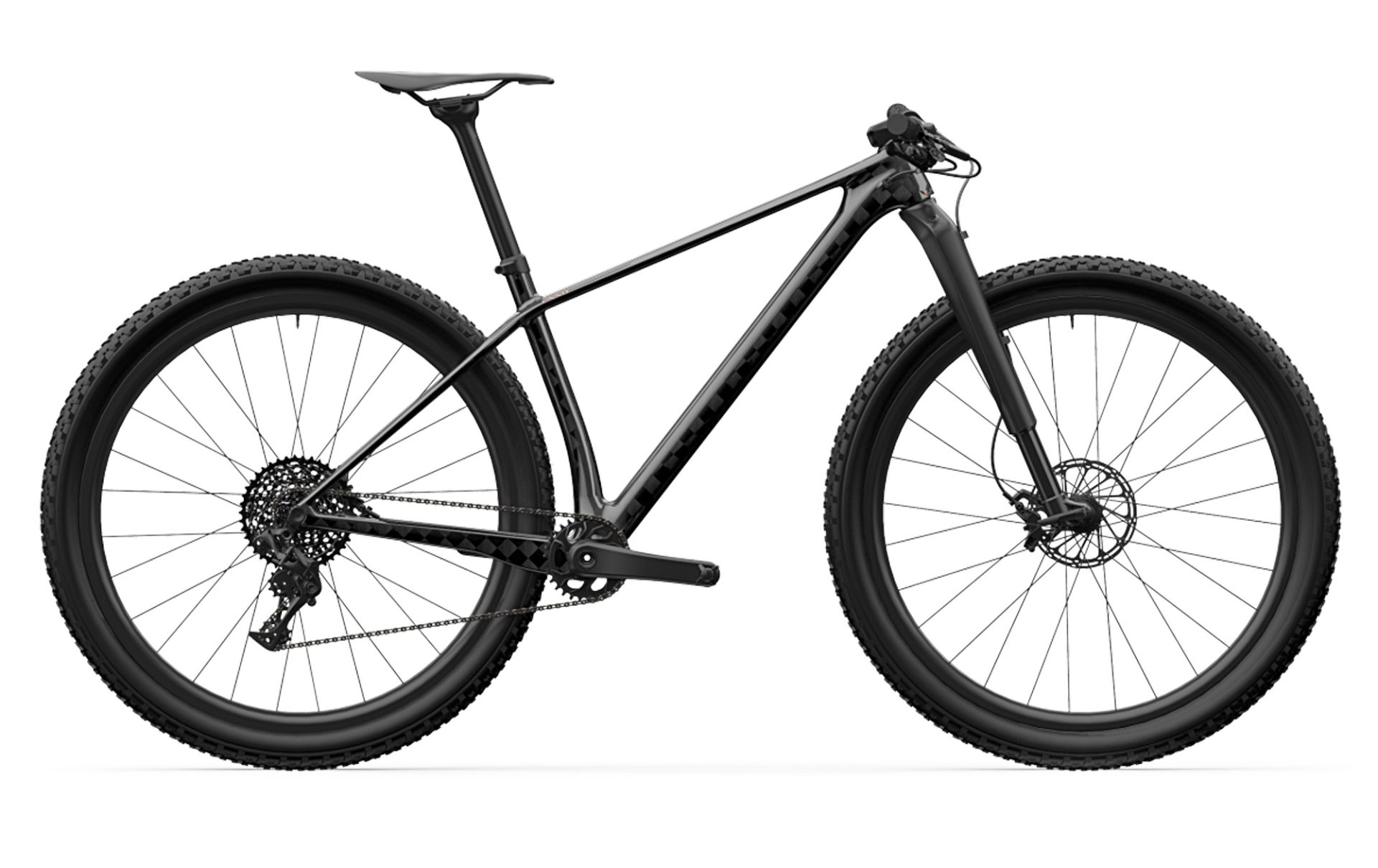
I rode that Unno just weeks before Australia went into lockdown, and it stayed in my mind for months. I’ve mentioned it before, but testing bikes for a living can quickly make you dislike your own. You’re constantly being reminded of the weaknesses in your beloved possessions and eventually, you give in. Every time I’d jump back onto the twitchy SwiftCarbon, I’d vividly remember what I was missing, and so the costly journey of resolution began.
That dreamy Unno was out of my budget. Perhaps it was merely the price, but I’d convinced myself I wanted a bike I could care less about. I wanted something I could fall over on, strap bags to, and treat in a way I wouldn’t with a high-priced and weight-focussed carbon bike. I wanted the EDC, Everyday Carry Cycle of off-road bikes. With similar geometry to the Unno and an affordable price, my heart was firmly set on the Specialized Chisel. And yet, every time I’d enquired, I’d be told there was no stock available. From early 2020, to 2021, and then even into early 2022, I couldn’t buy one.
I was all-in on the Chisel, I had already bought a 110 mm-travel fork, a wireless dropper seatpost (which would allow easy swapping between a rigid post if my heart desired), an XC-focussed cockpit, and light but high-volume tyres. They were all pieces that, while not superlight, would be carefree for wherever I took them. And yet, I made it to 2022 with no sensible alloy frame to hold those pieces together. And so, that dream of a carefree alloy frame soon morphed into one of a lighter carbon one. I was deep into a pile of awaiting parts, so carefree be damned.
The initial list was long but was quickly whittled down. Some options weren’t available on Australian shores, others were completely sold out. Some I’d ridden and knew them to be too stiff, too twitchy, or too weird in the rear wheel they demanded. And as timing would have it, Factor unveiled its Lando HT, an appealing 960 g (actual weight, without rear axle) frame that could fit all of the parts I’d impulsively purchased.
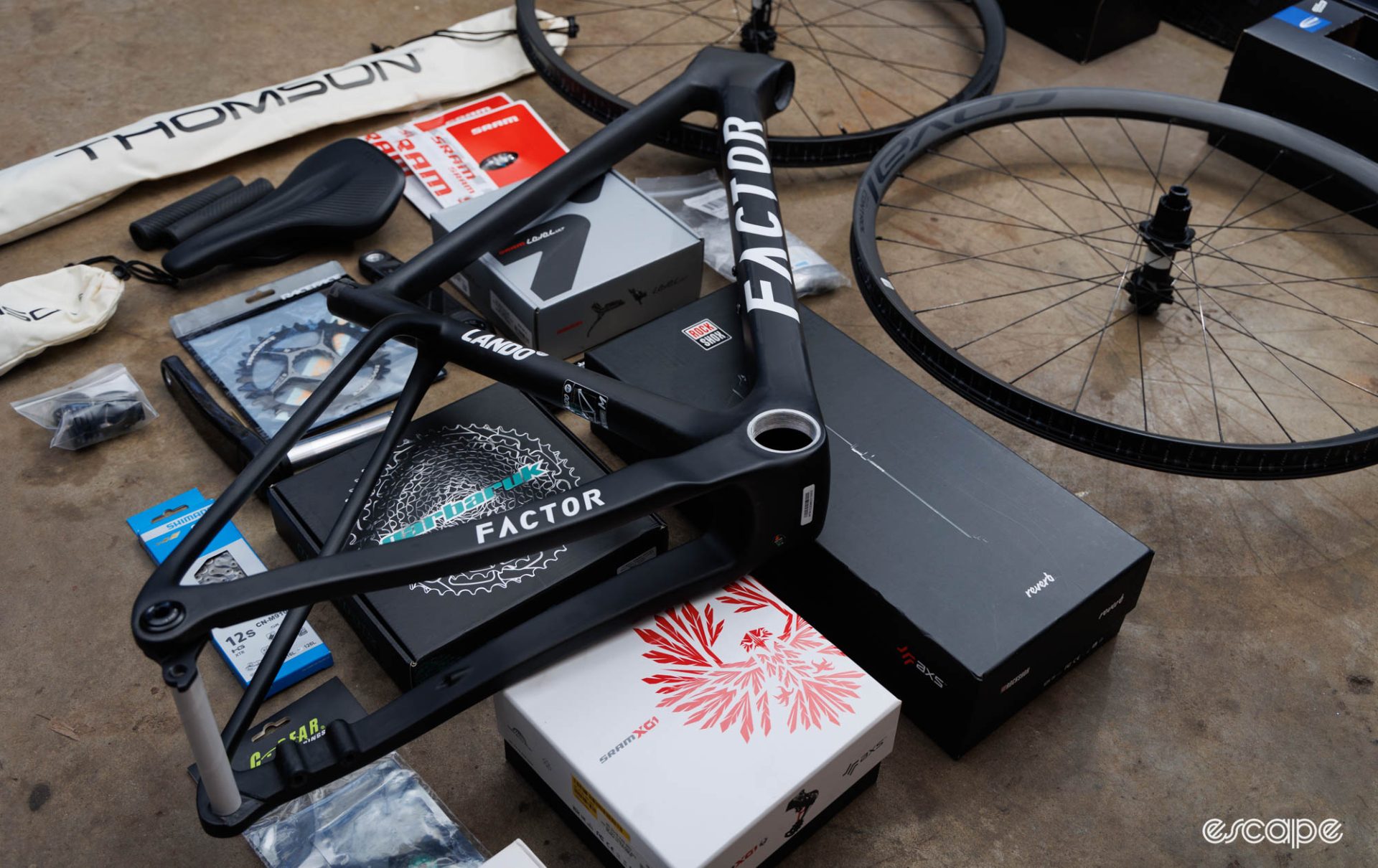
A drivetrain where nothing matches
While not wholly intentional, I created a drivetrain where every single component is sourced from a different manufacturer. In my mind I was trying to make something that’s the best of all worlds; in reality, I may have created the nightmare of product managers.
The Factor can be run with either hoses entering the side of the head tube, or straight through the headset. Given I had already bought the RockShox Reverb AXS dropper (I had dreams of being able to throw in a lighter rigid post), it wasn’t too much of a stretch to see that getting the matching wireless shifting would allow me to use that clean-looking headset cable routing with minimal downside.
Built at a time before SRAM Transmission, I liked the company’s wireless Eagle shifting but thought it lagged behind Shimano in terms of under-power positivity and silky smoothness. Add in that I had XT/XTR 12-speed on my trail bike, and the thought of being able to swap wheels was appealing. What I wanted were the clean looks of SRAM Eagle AXS, but with the improved shifting of Shimano.
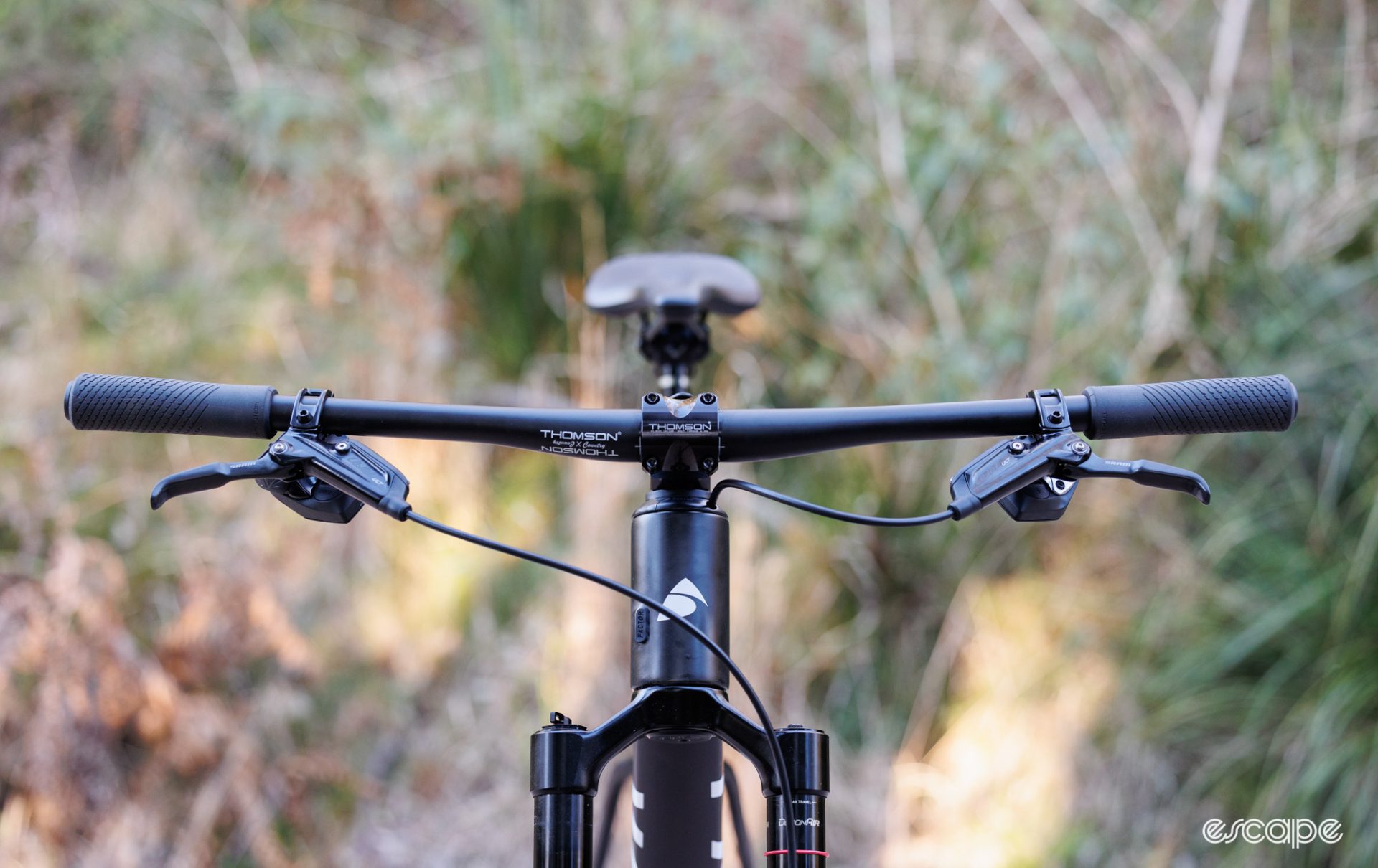
It wasn’t an original idea, I’d heard of others doing this very combo with success. The Shimano 12-speed cassette requires a different freehub body. The unique inner plate profile of the Shimano 12-speed chain typically requires a different narrow-wide chainring. And I’d heard mixed reports of whether the stock SRAM Eagle pulley wheels would work, with the general consensus being that you could file off the “wide” sections to make it work. Nothing too crazy.
Yet, I found ways to make it harder. I wanted the combo lighter and I wanted it to feel free of drag through the pedals (this is a very underrated feeling that I strive for in all of my bikes).
Filing down those stock Delrin pulley wheels didn’t excite me. Instead, I soon pulled the industry card and asked for two pairs of C-Bear ceramic pulley wheels – one Eagle 12-speed and another Shimano MTB 12-speed. I wanted the tooth profile of the Shimano MTB, but with the side plates to suit an Eagle 12-speed derailleur. The combo worked a treat, although it’s surely an excessive and expensive path. As a side note, I later learned that CeramicSpeed pulley wheels aren’t chain-specific, oh well, thanks to C-Bear for indulging me with the parts-swap play.
The chain was always going to be a waxed Shimano XTR M9100, no hesitation there. However my goal of using a Shimano Hyperglide+ cassette was foiled by a complete lack of stock in Australia at the time. In equal parts desperation and intrigue, I bought a Garbaruk 10-51T Microspline cassette. At the weight of XTR and the price of XT, it seemed like a victory.
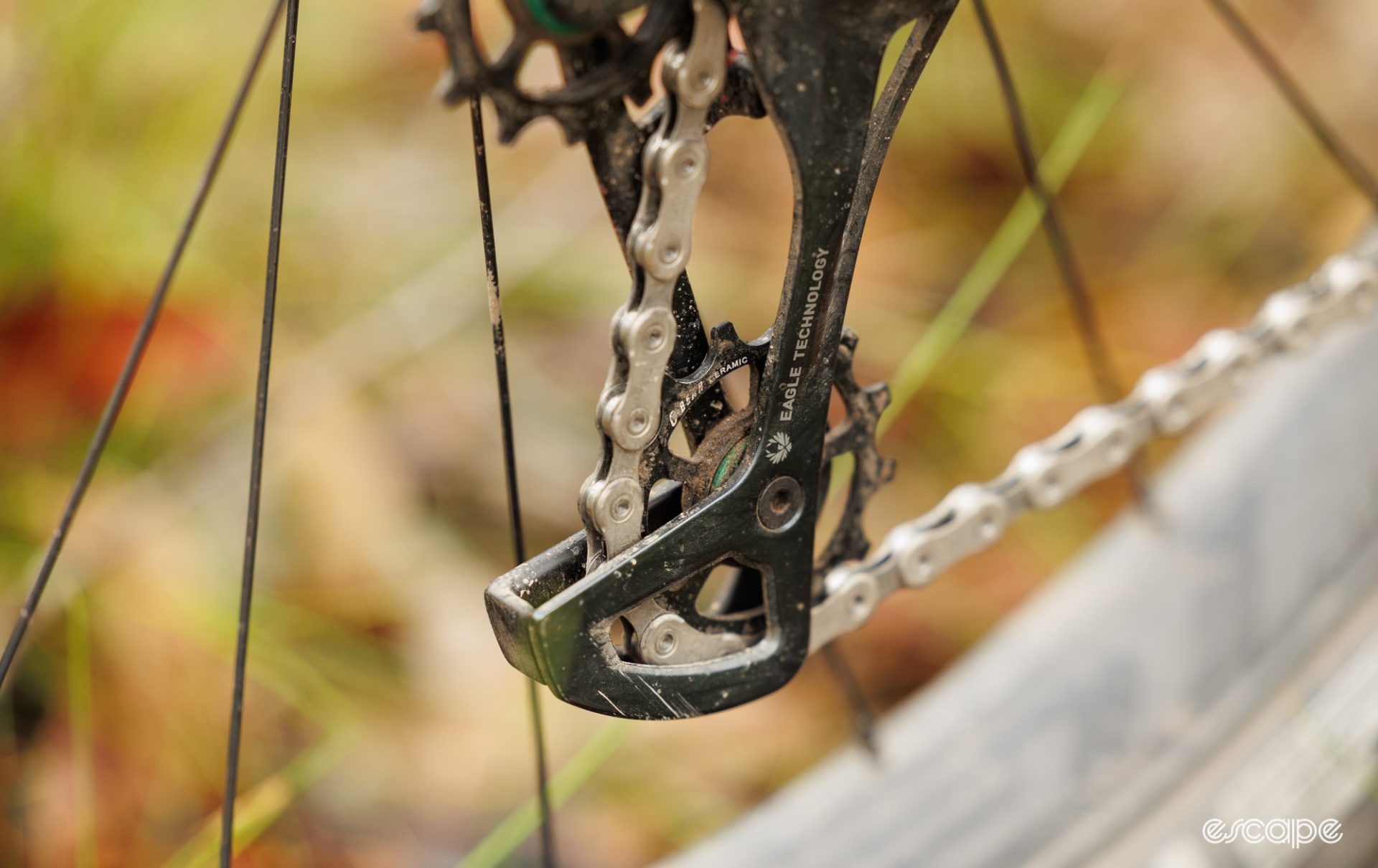

Finally came the crank. I needed a Shimano-friendly ring but wanted something lighter than a Shimano crank. Offering a good number on the scales, I landed on a set of RaceFace Next SL cranks with the matching Shimano 12-speed compatible ring. I later replaced the plastic preload adjustment collar with an alloy version from Cane Creek for better finite tension control (an unassuming upgrade that actually made a difference). Meanwhile, the Factor Lando HT frame uses a unique offset T47 bottom bracket and so they supply a fancy CeramicSpeed model with different sizes of bearing top hats to work with 30, 29, and 24 mm crank axles.
The end result is nearly everything I had hoped for. The shifting feels a touch faster than Eagle AXS. It certainly felt smoother and with less drag through the chain than either a stock SRAM AXS or Shimano XTR drivetrain. However, that Garbaruk cassette, while it never misses a shift, just doesn’t have quite the same controlled downshift as a Shimano HyperGlide+ cassette. And based on the experience of a friend, I have suspicions that the durability isn’t quite as good. Still, it’s good enough to call a success.
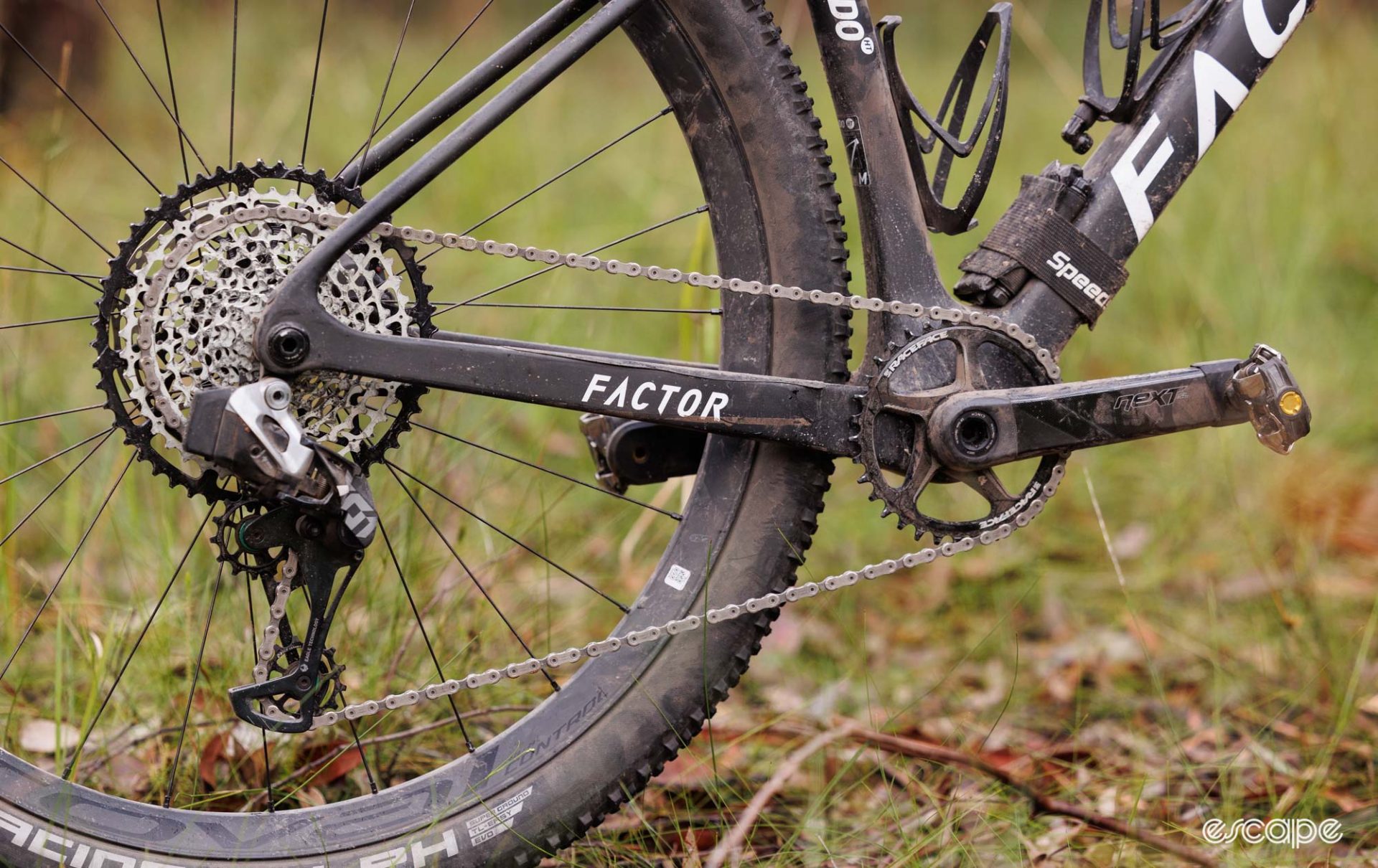
Currently, the bike has SRAM’s XX SL Eagle Transmission, which remains in for long-term testing. My thoughts on that group haven’t changed much since the introduction, although I have recently moved to narrower spindle XTR pedals to overcome the wider Q-factor crank provided (SRAM does offer XX SL in a narrower 168 mm Q-Factor, I just don’t have it). My colleague James Huang detests the multiple-gear shifting speed of this group, but I’m not one to often dump a bunch of gears and so I don’t have much issue with that element.
In the weeds
When it comes to bike things I’ve long obsessed over the tiniest of details that I’m bound to be the only one who will ever know. Sometimes this is simply old weight-weenie habits coming to the surface, other times it’s just me being vain about something inconsequential. It’s these thoughts that prompted the “On our minds and over the heads of your family” segment on the Geek Warning podcast, and I’d like to think this hardtail offers a few such elements.
Now, this hardtail is light and premium, but it’s certainly no weight-weenie build. I’d happily run all of the pieces on a 120 mm-travel down-country/marathon/cross-country/light-trail bike. And while the dropper seatpost is a 592 g behemoth (without battery!), or that I could save 100 grams in the stem and handlebar, or I could trade out the spokes and hubs to lighter iterations, I rather still found myself stupidly obsessing over minute things.
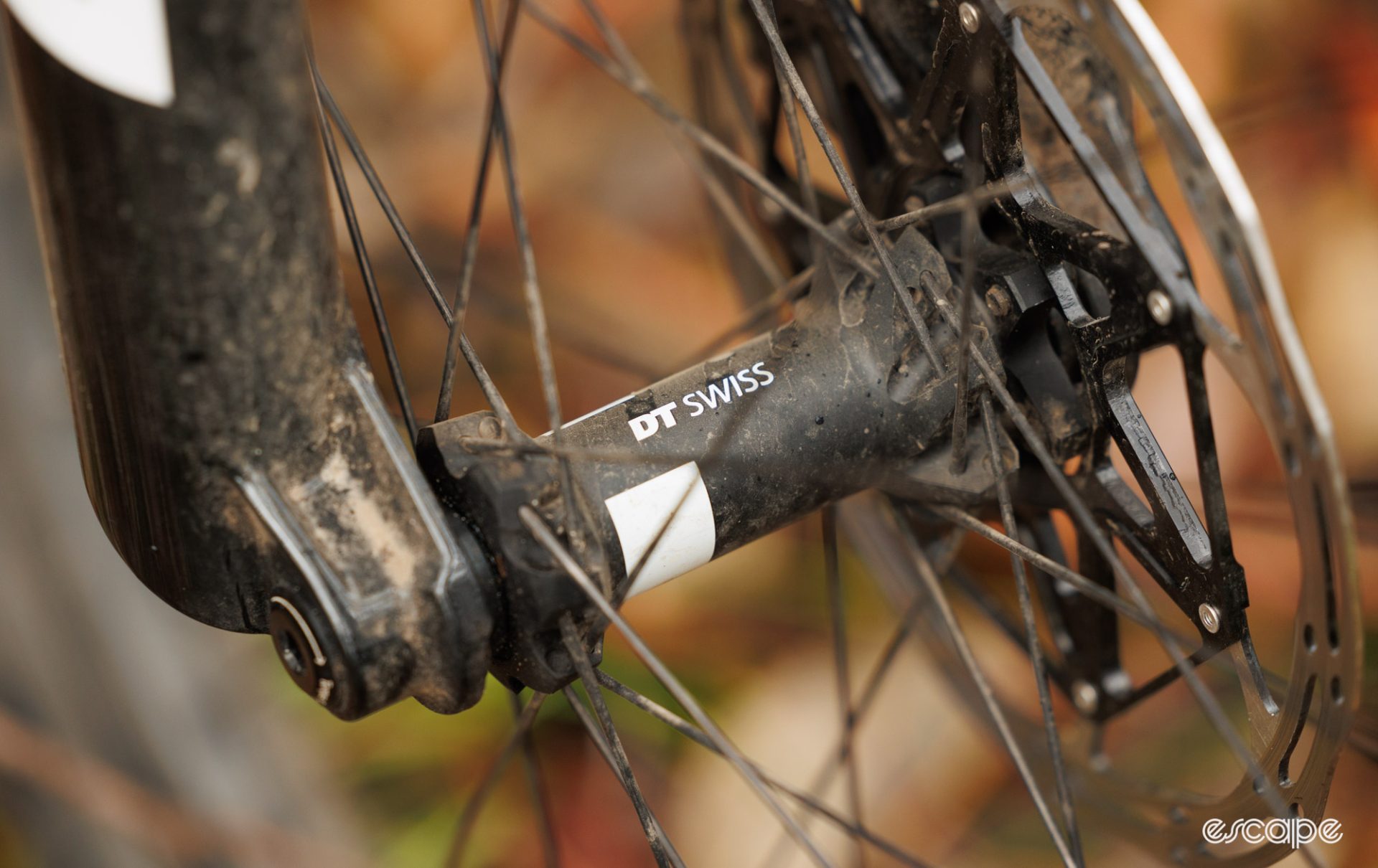
For example, the SRAM Level Ultimate brakes come with steel pad axles. Meanwhile, SwissStop brake pads are shipped with some identical-looking aluminium ones which require a jewellery scale to measure the difference. Nobody will ever know I purposefully changed these, except you, because I just told you.
I made the relatively heavy Thomson X4 stem a whole 8.5 grams lighter by swapping its bolts to titanium. More importantly, I replaced the stupid 3 mm hex tool interface with a far more normal 4 mm size. Now I can tighten my stem without changing the bit in my pre-set torque wrench.
Other bolts were simply swapped because I wanted more black on the bike, or just less polished silver/ti, or maybe I simply needed to reach the free shipping minimum with the fancy bolt store, that part is hazy. Or in the case of the rear flat-mount bolts (yes, the Factor is a flat-mount mountain bike), I used 16 mm titanium washers to better spread the load on the carbon face.
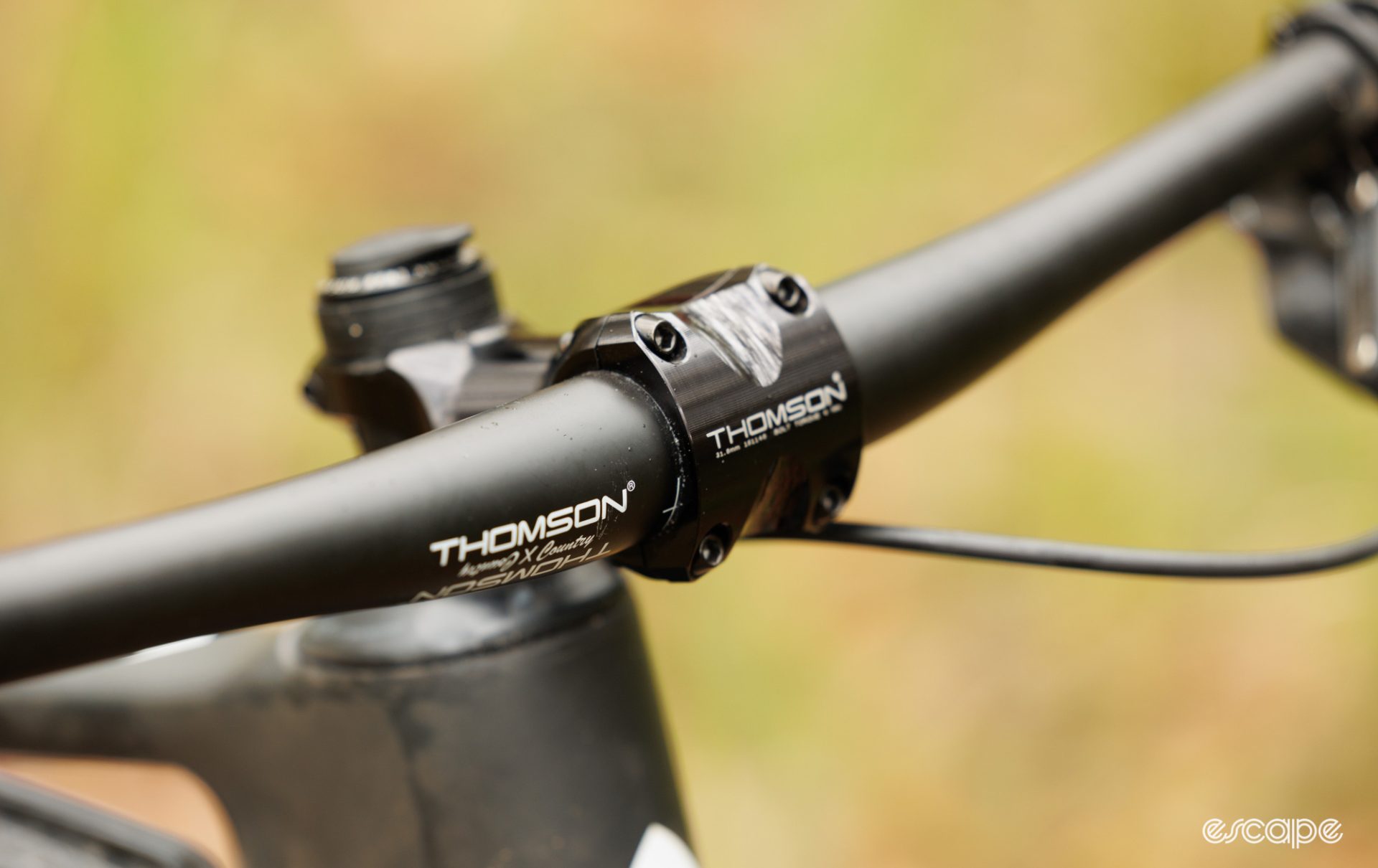
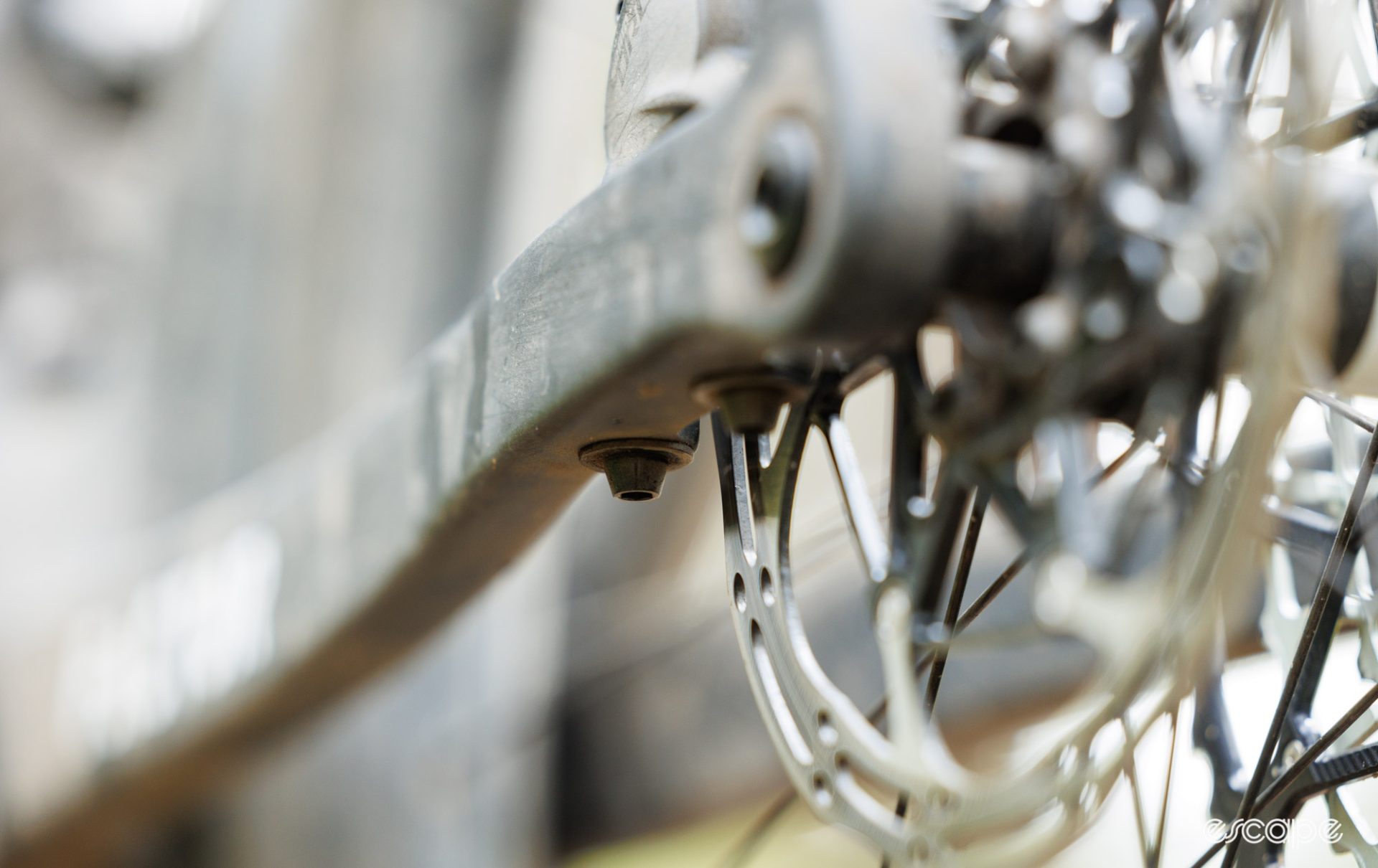
Further aesthetic flourishes include custom fork graphics from Slik Graphics so that my SID Ultimate (which came stock with silver graphics) matched the basic black and matte white frame. I noticed the 2024 SID Ultimate now comes with such white graphics, I’m honoured. And for once I wasn’t eager to hide the bold white graphics on the DT Swiss 350 hubs.
I also used Posca ink pens in certain places, but most notably, to hide the bright blue that covers the Factor/CeramicSpeed T47 Coated bottom bracket. Such paint was only supposed to be temporary before I could strip off the anodisation, but I just never got around to it, and I don’t hate that a close look reveals that I took a maker pen to such a premium product.
Finally, I always obsess about how I carry spares as I’m allergic to mixing saddlebags with dropper posts. There’s a multi-tool, chain breaker, tyre lever, spare quick link, and Co2 canister stashed in the steerer tube in the way of OneUp’s EDC. I have a modified SpeedSleev wrap holding a Tubolito S 29 tube (wrapped in black plastic to hide the orange) and Dynaplug Racer at the base of the downtube. And I keep a small Co2 head secured to the base of a Specialized Rib Cage II via a custom 3D printed threaded bung of my own time wasting. The end result is a bike that I can jump on without stuffing my pockets, and for short rides, I just need to carry keys and a phone.
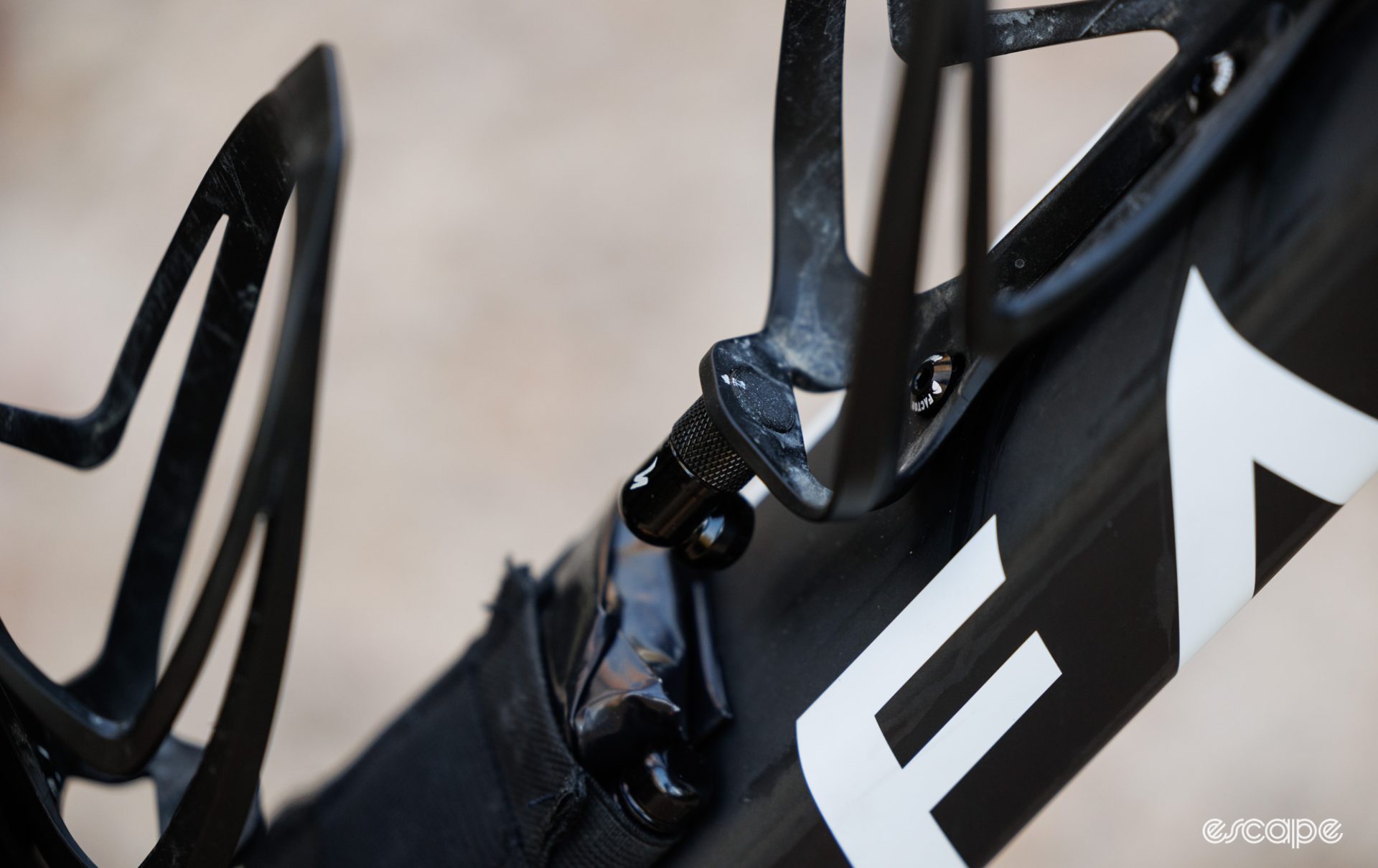
Always changing
Simply put, this bike is exactly what I wanted. On smooth surfaces it rewards me with more pace than my fitness deserves. It’s more confident, easier to maneuver, and fun on mountain bike trails than a gravel bike could dream. It’s stiff under acceleration but not excessively so. It’s fairly light, but with parts I don’t need to think about or that feel compromised. And every time I ride it I get positive nostalgia for my weight weenie cross country days.
And yet, despite all that’s good, I still find myself pondering what’s next.
Shortly after (and finally) building this hardtail, I got impulsive and bought a new gravel bike frame. Part of that purchase was purely so I had a bike to test gravel-related parts on, but it was more than that. That gravel bike may be far rougher on the body and slower over my local service trails, but it doesn’t numb this rolling terrain to the point of being boring. Meanwhile, the gearing, narrower tyres, and position of the gravel bike remain superior for connecting road sections.
As it turns out, a gravel bike makes a pretty damn good gravel bike. Underbiking can turn boring trails into a hoot. As I’ve been reminded by this journey, riding a hardtail on gravel is overbiking, and that doesn’t excite me to get out. And then, finally, perhaps what confirmed my lack of true need for this bike most was doing a cross-country race on what I consider to be the most hardtail-friendly course around, and yet, my body just wasn’t up to keeping the hardtail rolling above the bumps – I was slower, more fatigued, and frustrated.
So what’s next? The parts of this hardtail may soon find themselves onto a (still to be decided) lightweight 110/120mm cross-country full suspension, one with room for two bottles and less than a kilogram of weight gain. In doing so, I’ll hopefully merge my hardtail and 140/120 mm trail bike into one. A bike I can perhaps do more comfortable cross-country laps on, while not being limited to what trails I cruise. That’s the goal at least, let’s see how long it lasts …
Build List
- Frame: Factor Lando HT, medium
- Fork: RockShox SID Ultimate, Slik Graphics decals
- Headset: Factor x Ceramic Speed SLT, with OneUp EDC Threaded top cap
- Front wheel: Roval Control 29 Boost, with oversized torque end caps
- Rear wheel: Roval Control 29 Boost, with Star Ratchet Microspline driver
- Front tyre: Schwalbe Racing Ray Evo Super Ground Addix 29 x 2.35, tubeless (typically 20 psi)
- Rear tyre: Schwalbe Racing Ralph Evo Super Ground Addix 29 x 2.35, tubeless (typically 22 psi)
- Crankset: RaceFace Next SL, 170 mm, 34T Shim 12 chainring, Cane Creek Preload adjuster
- Bottom bracket: CeramicSpeed T47A Coated, 30 mm bearing, poorly painted black
- Chain: Shimano XTR 12-speed, Molten Speed Wax treatment (top-up lubed with CeramicSpeed UFO All Conditions)
- Cassette: Garbaruk MS 10-51T
- Rear derailleur: SRAM XO AXS, painted cage, stickered logo, titanium B-tension bolt, custom configured C-Bear pulley wheels
- Shifter: SRAM GX AXS, titanium bolts
- Front brake: SRAM Level Ultimate, SRAM Centerline X 180 mm rotor (with Ti bolts)
- Rear brake: SRAM Level Ultimate lever, SRAM Force flat mount caliper, SRAM Centerline X 160 mm rotor (with Ti bolts)
- Handlebar: Thomson XC Carbon Flat, 730 mm width
- Stem: Thomson X4 70mm
- Seatpost: RockShox Reverb AXS 125 mm dropper, 30.9 mm, fitted with Came Creek 30.9 – 31.6 mm seatpost shim
- Grips: Ergon GXR, small
- Saddle: Ergon SR All Road Core Pro Carbon Men (photographed), now changed back to my trusty Specialized Phenom Pro 155 mm.
- Bottle Cages: Specialized Rib Cage II
- Pedals: Look X-Track Race Carbon-Ti
- Actual weight: 9.82 kg, with pedals and cages
Gallery
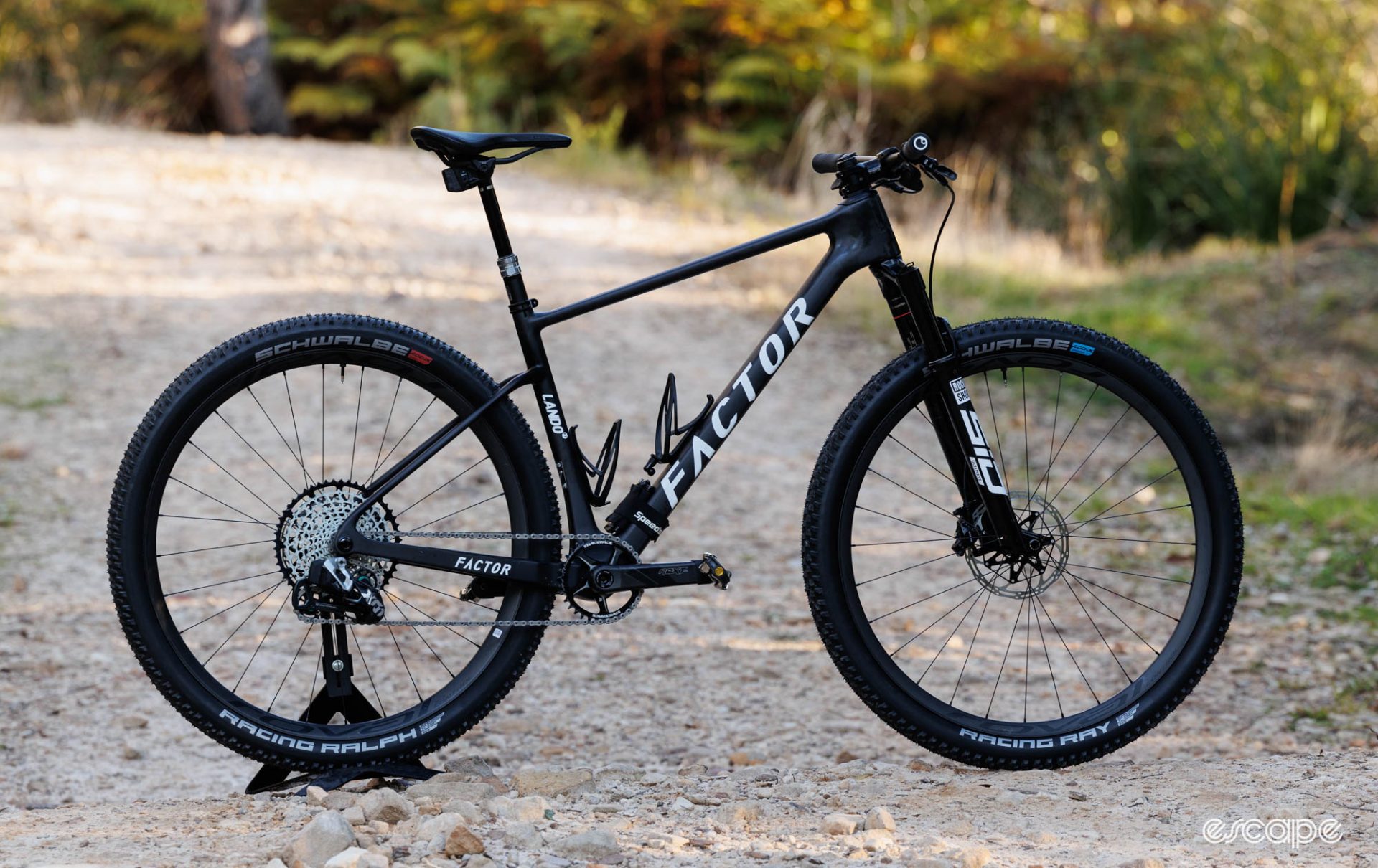

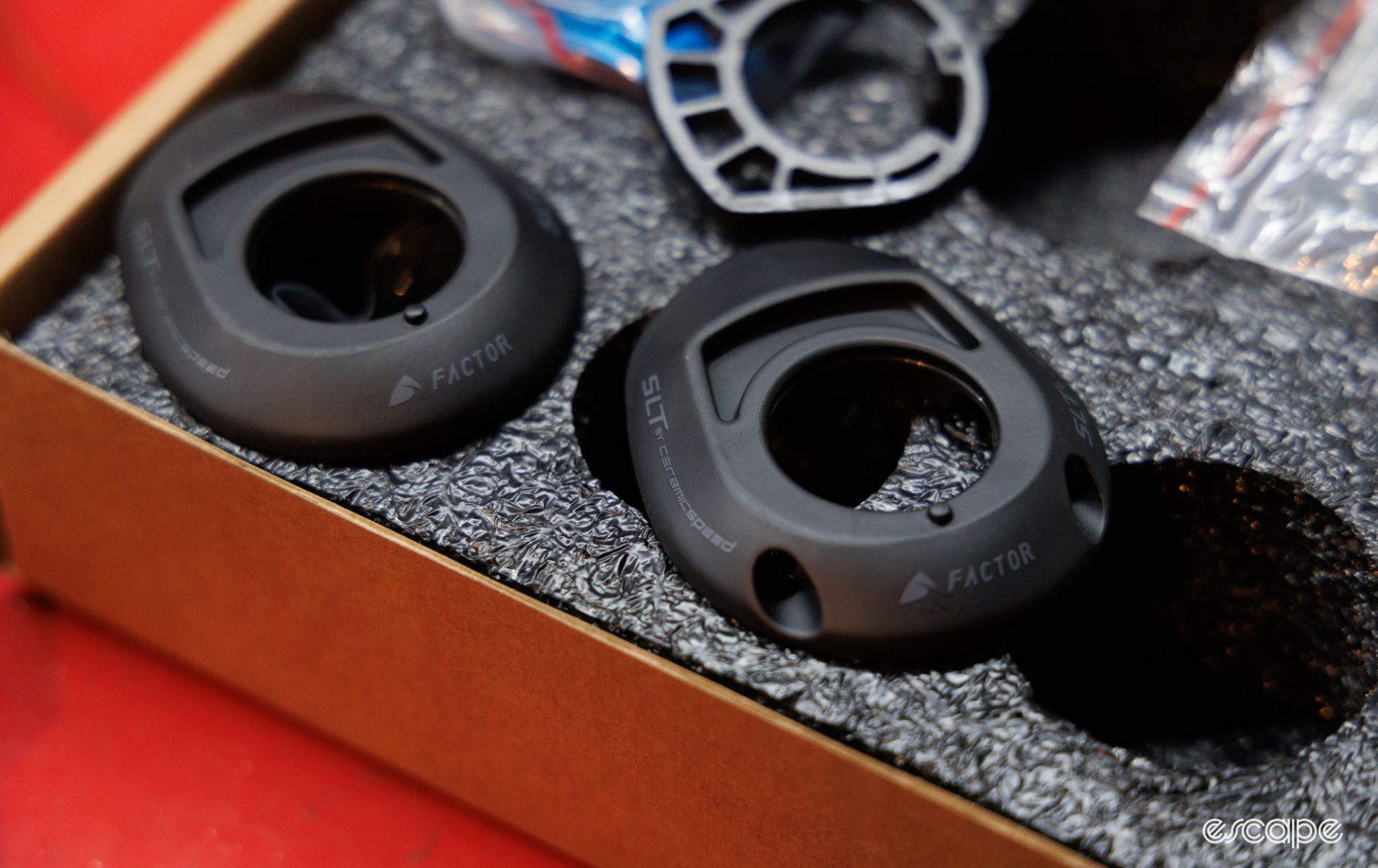
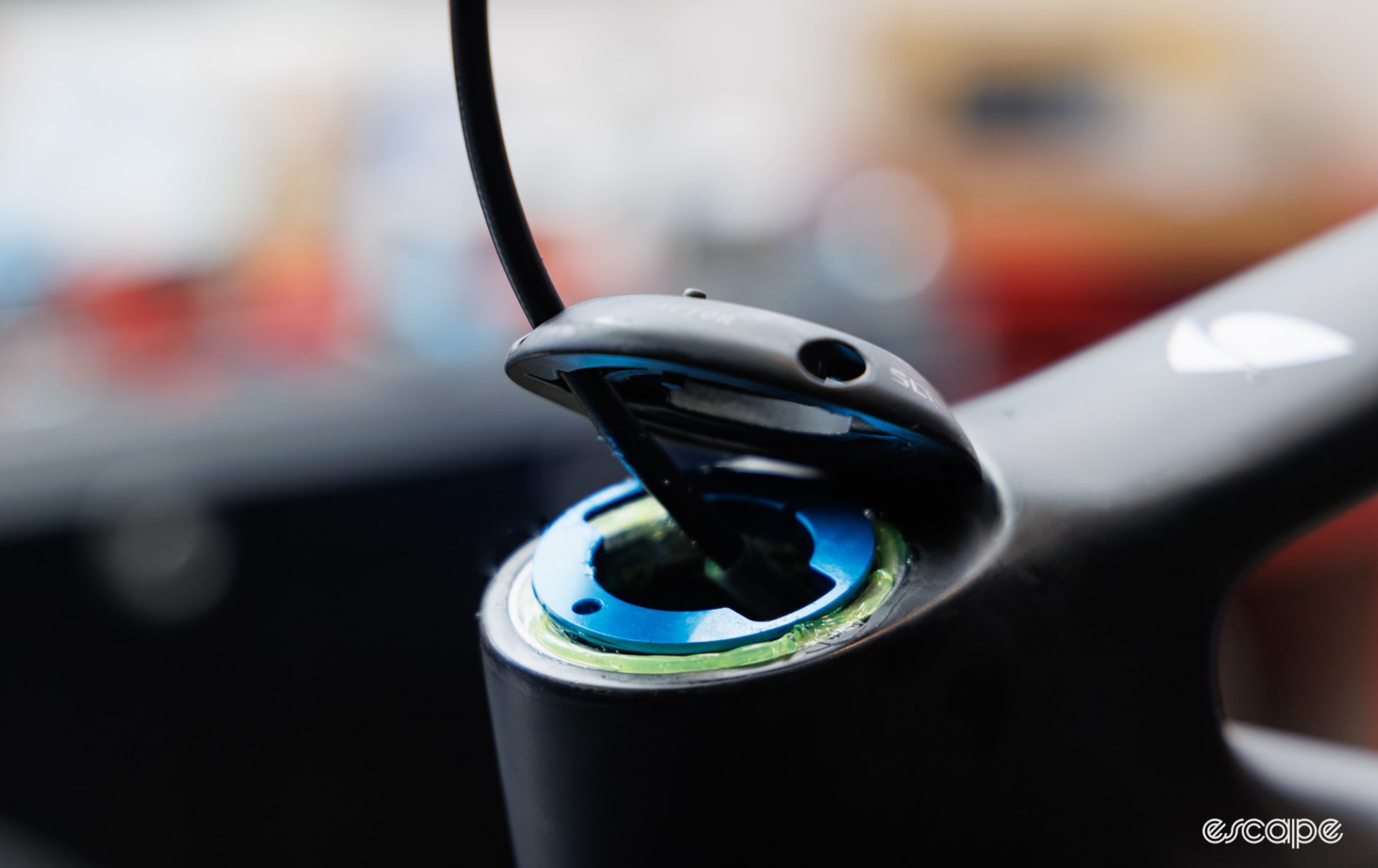


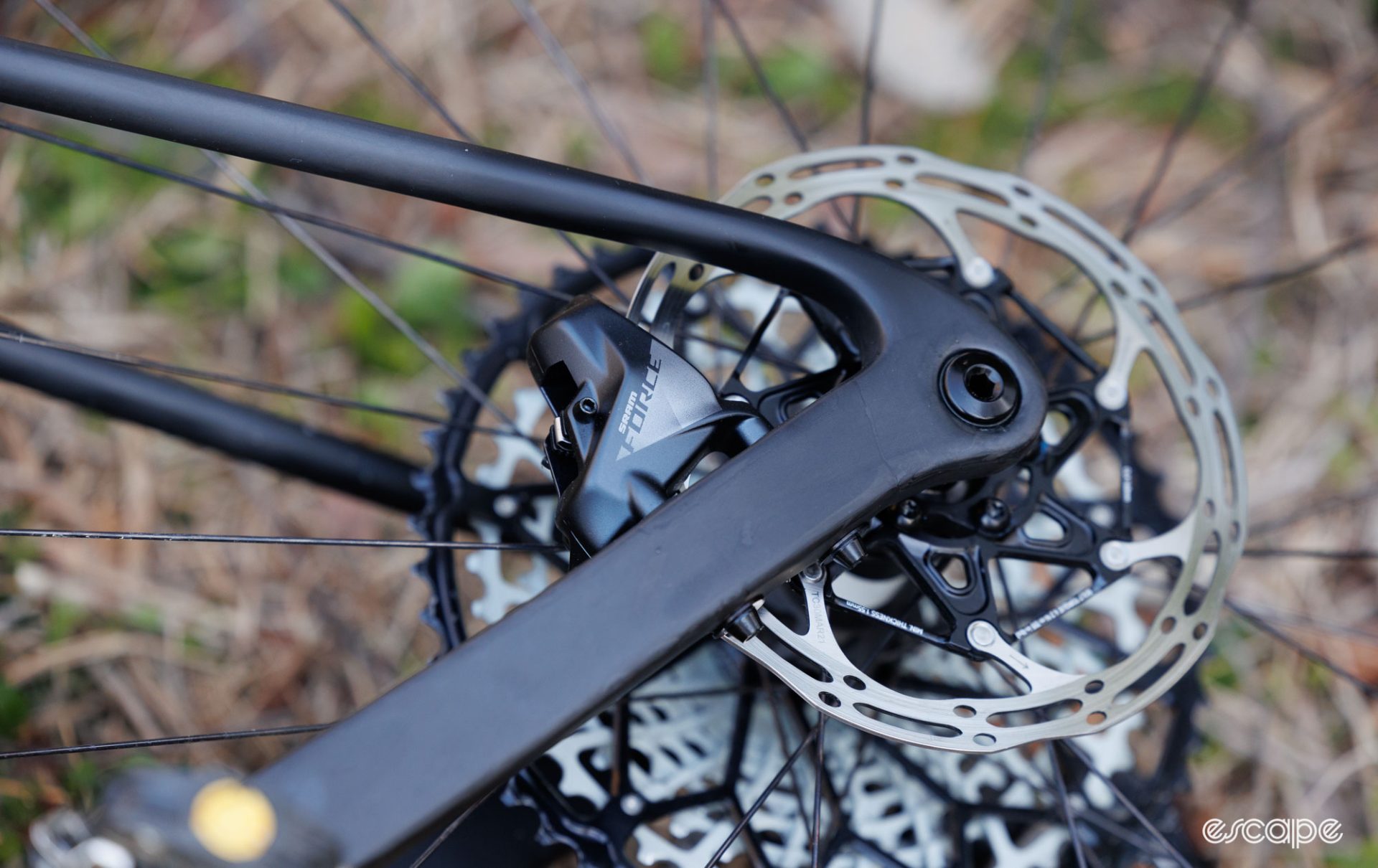
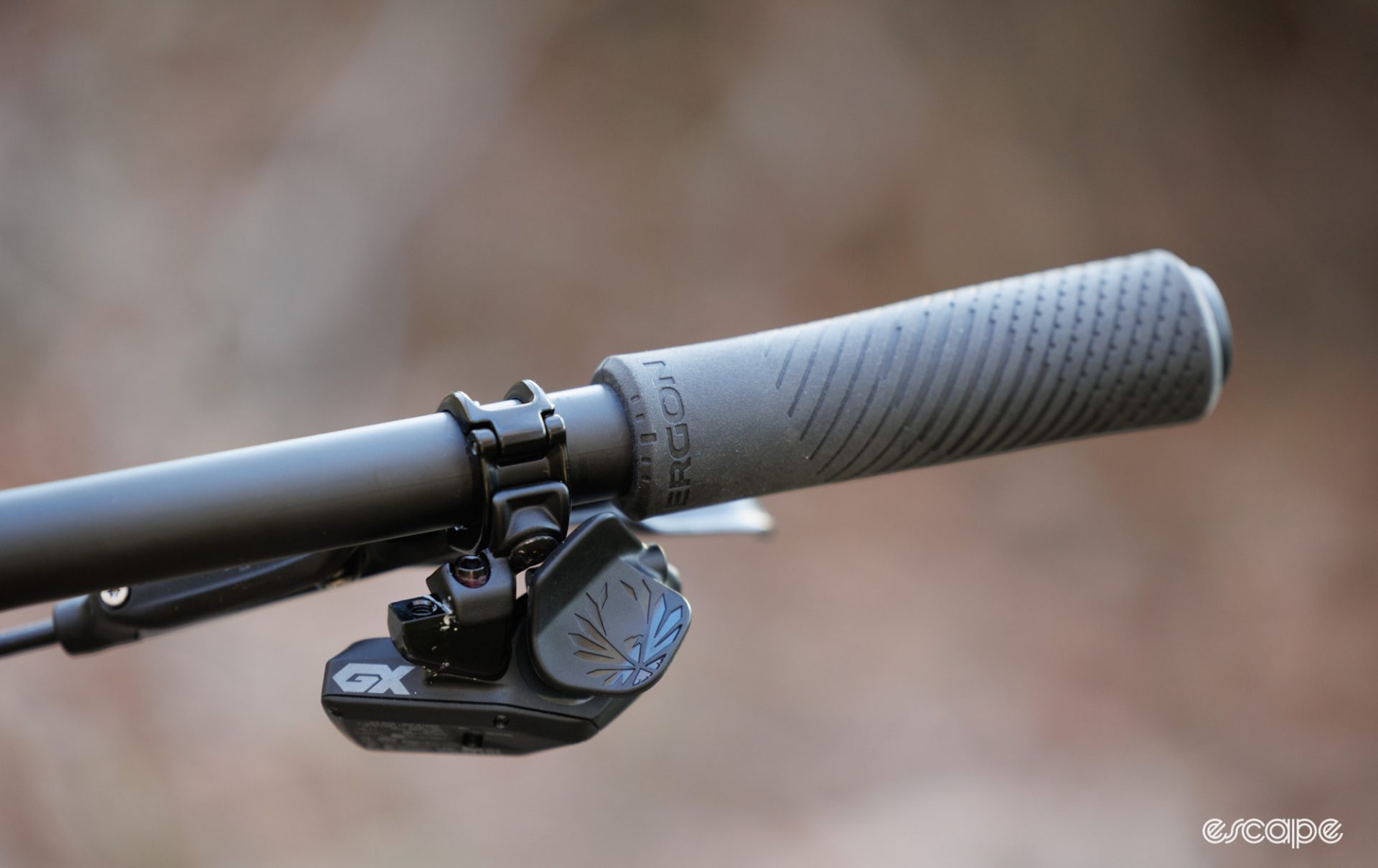
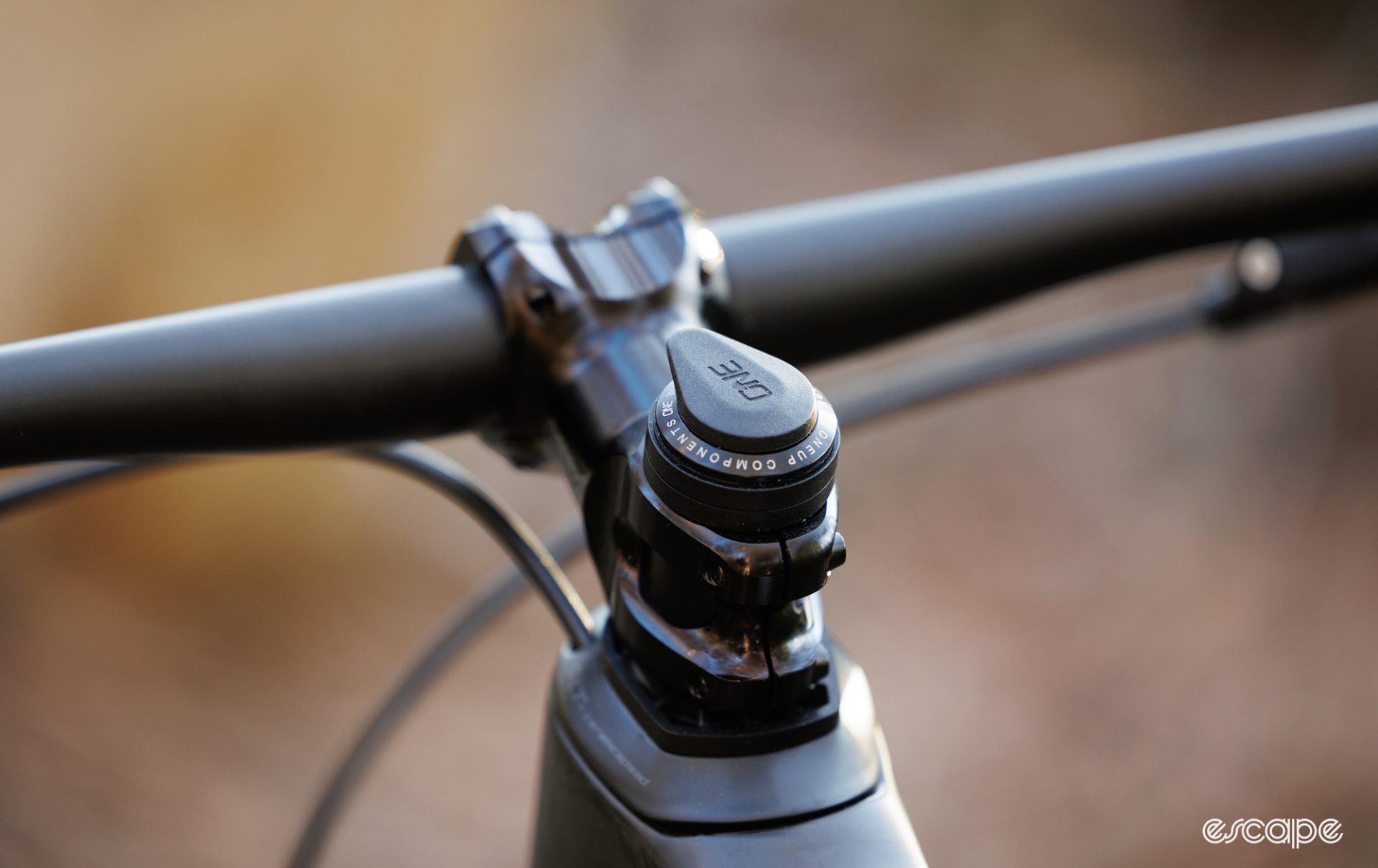
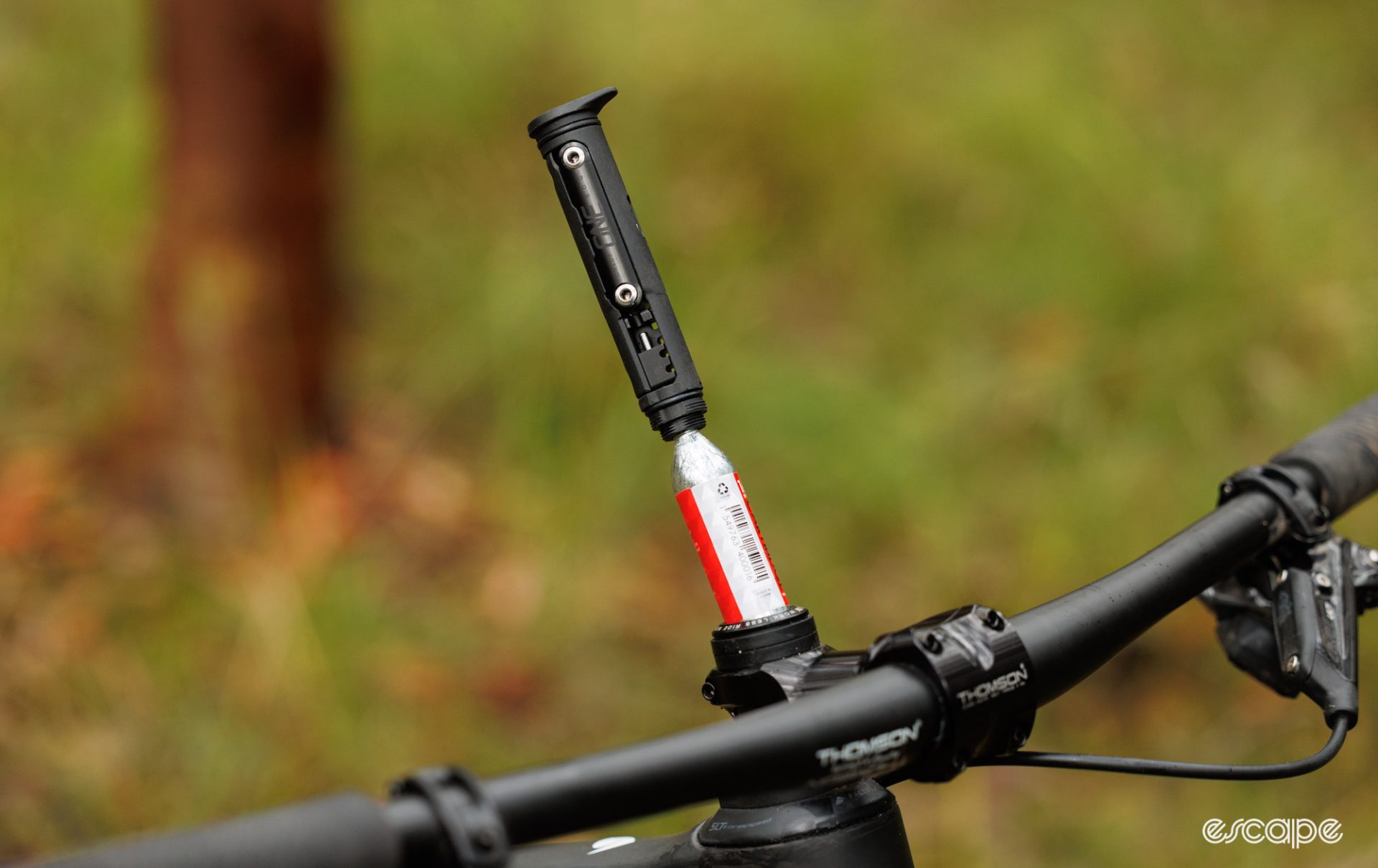
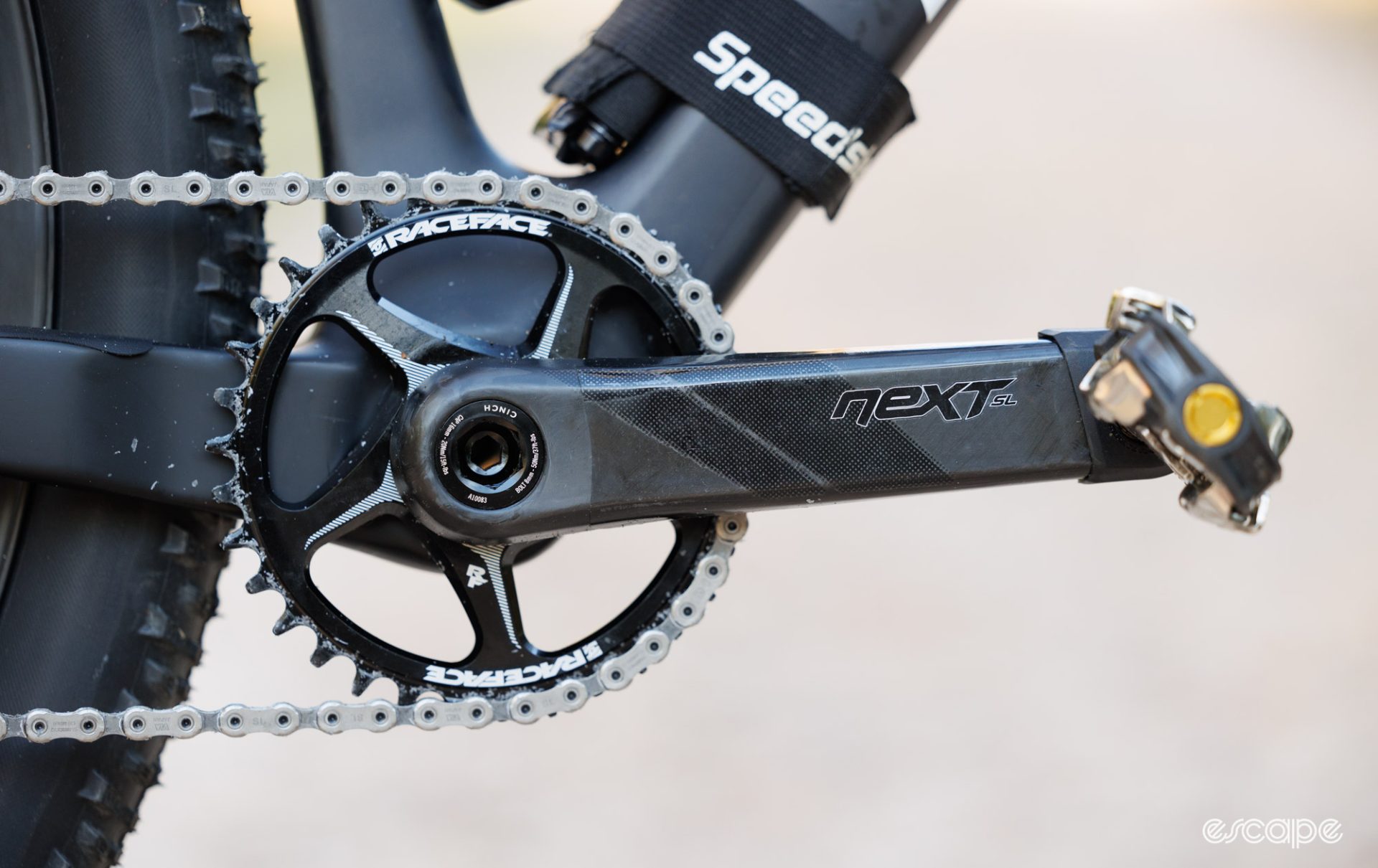
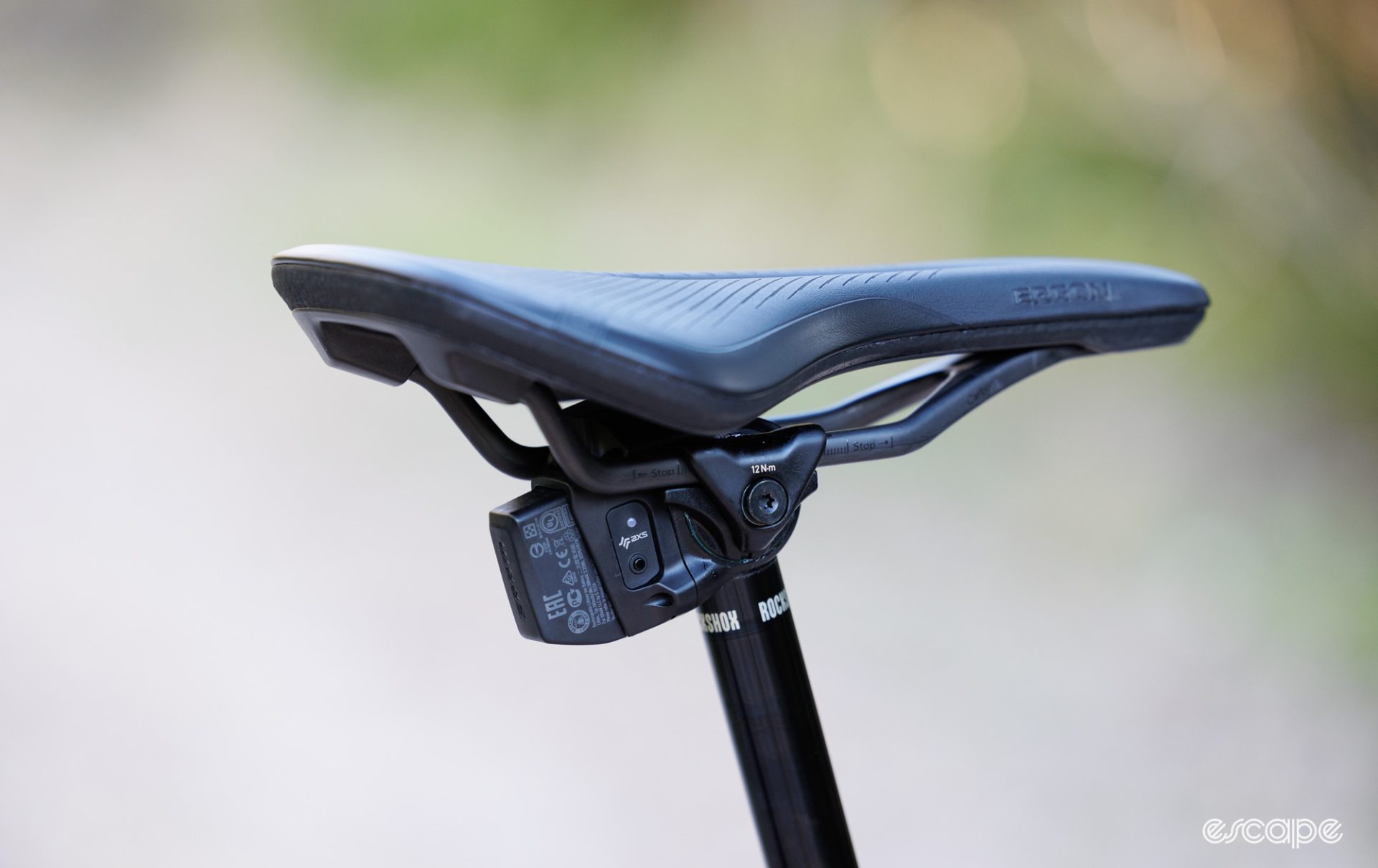



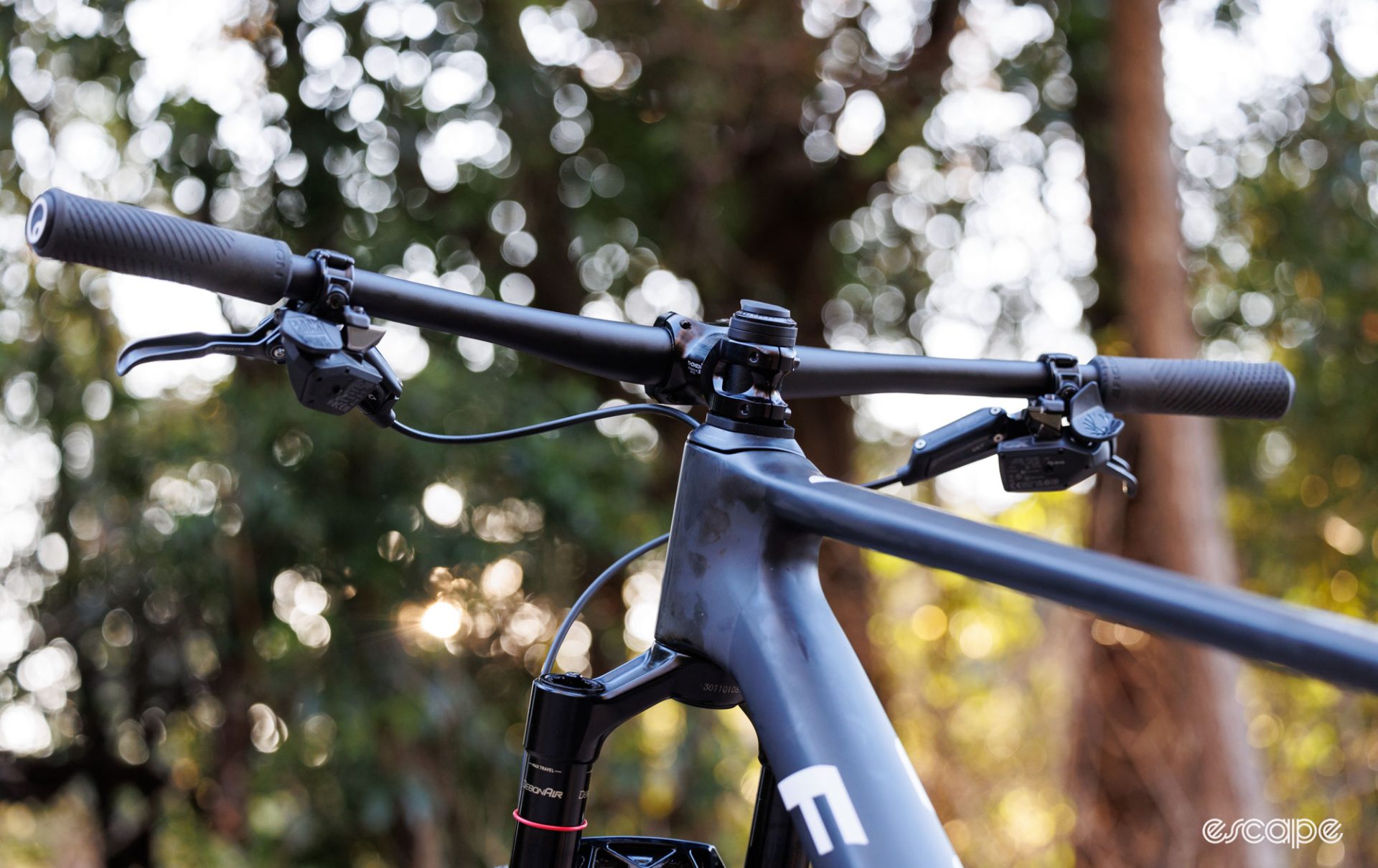
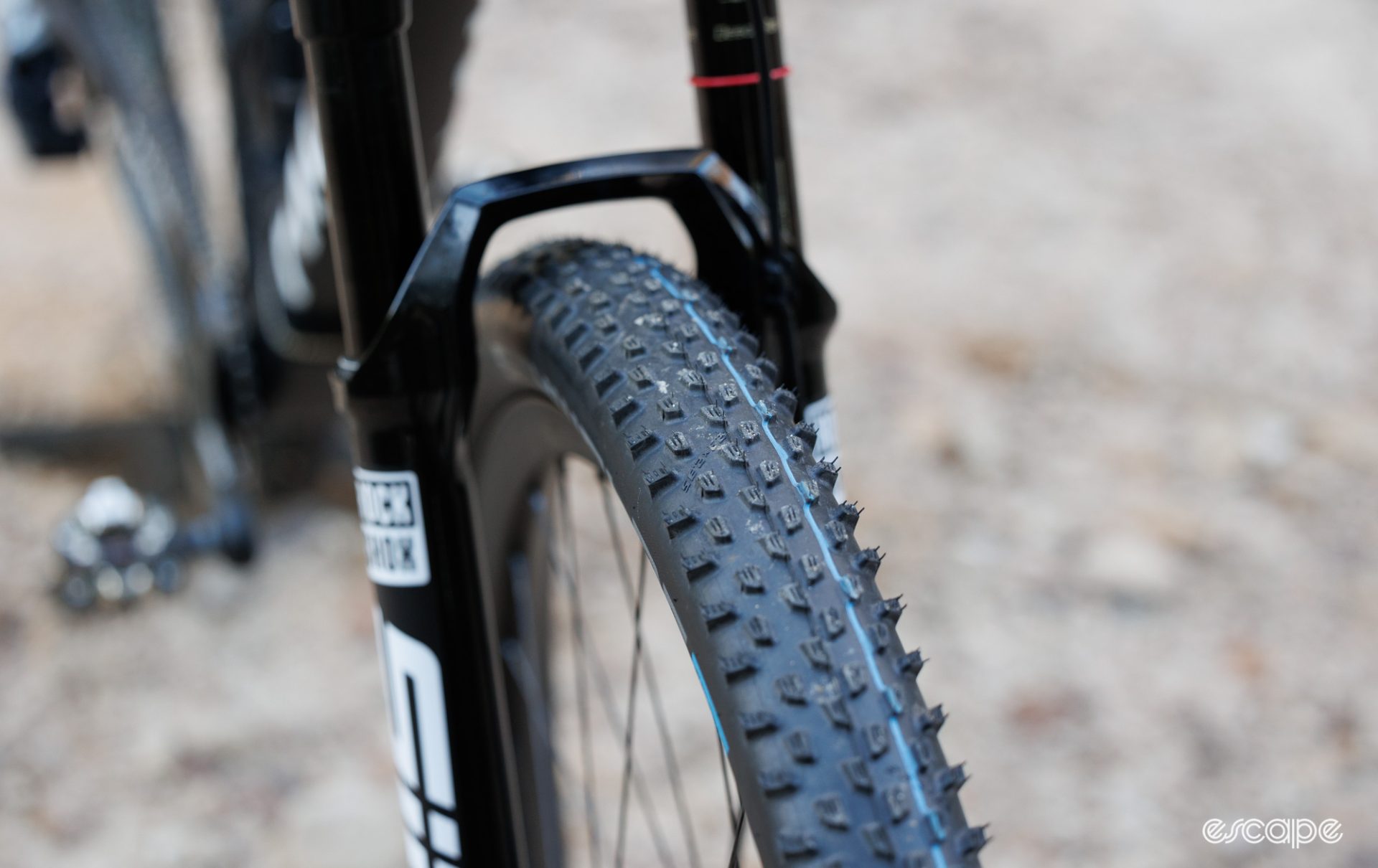

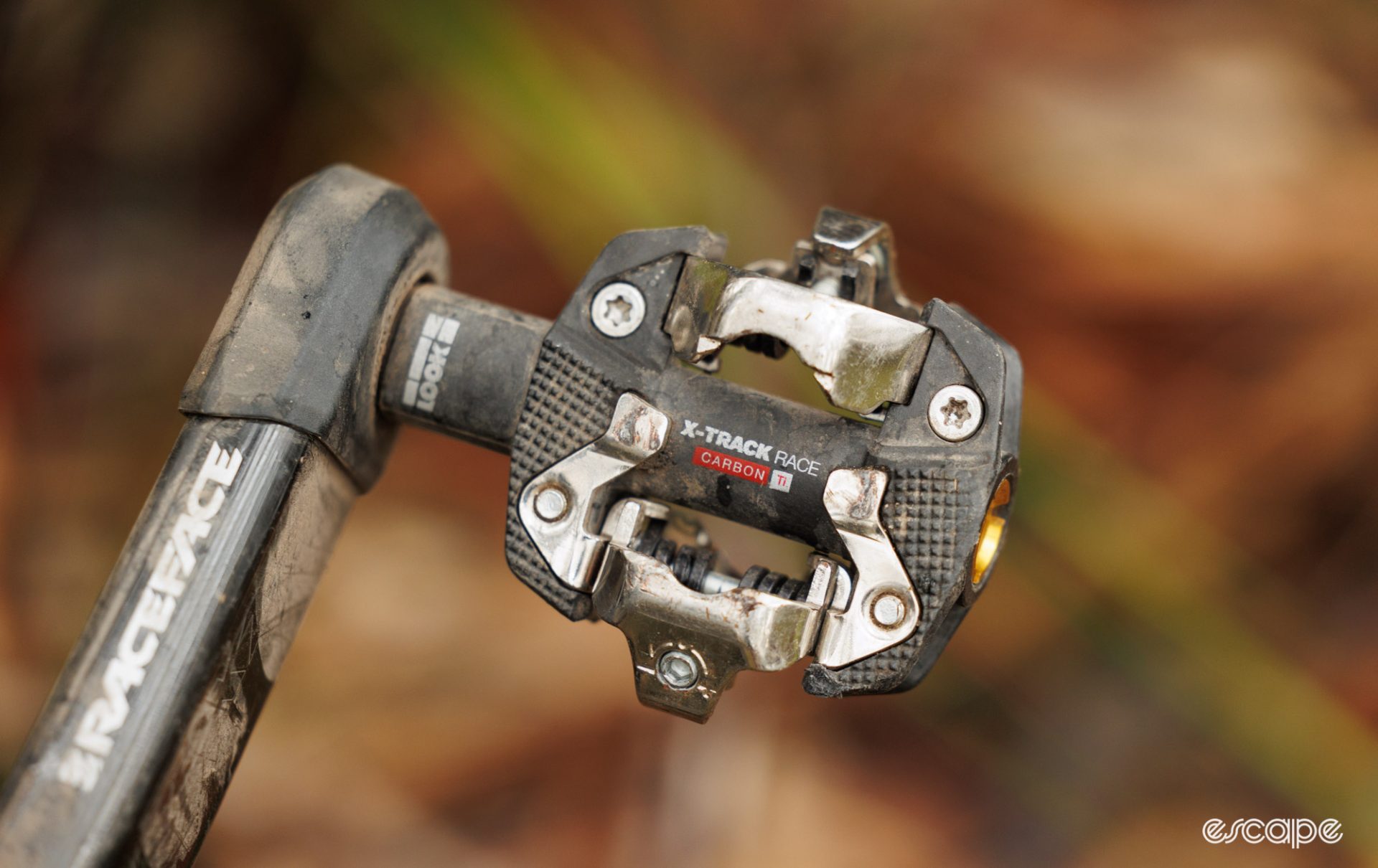
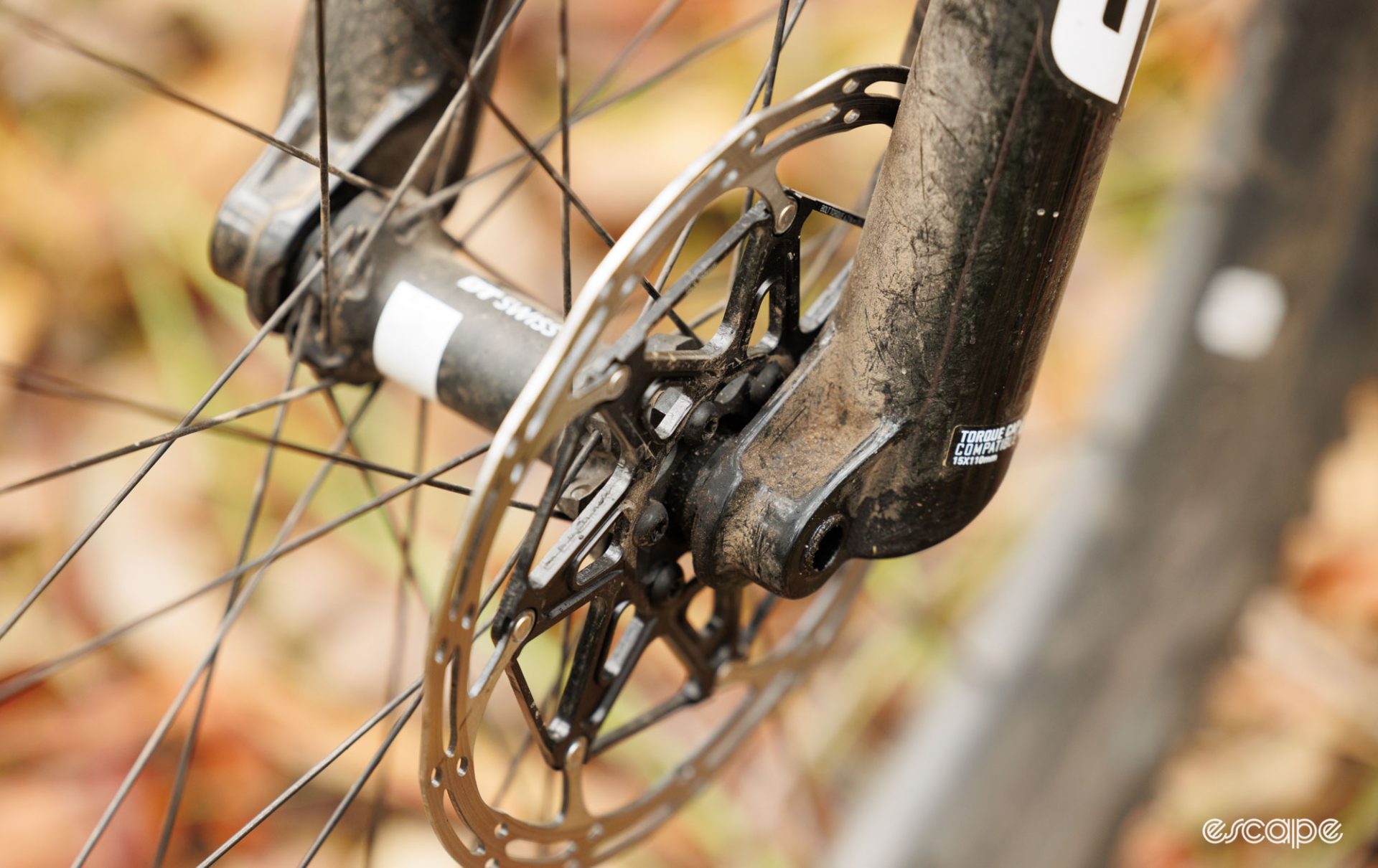
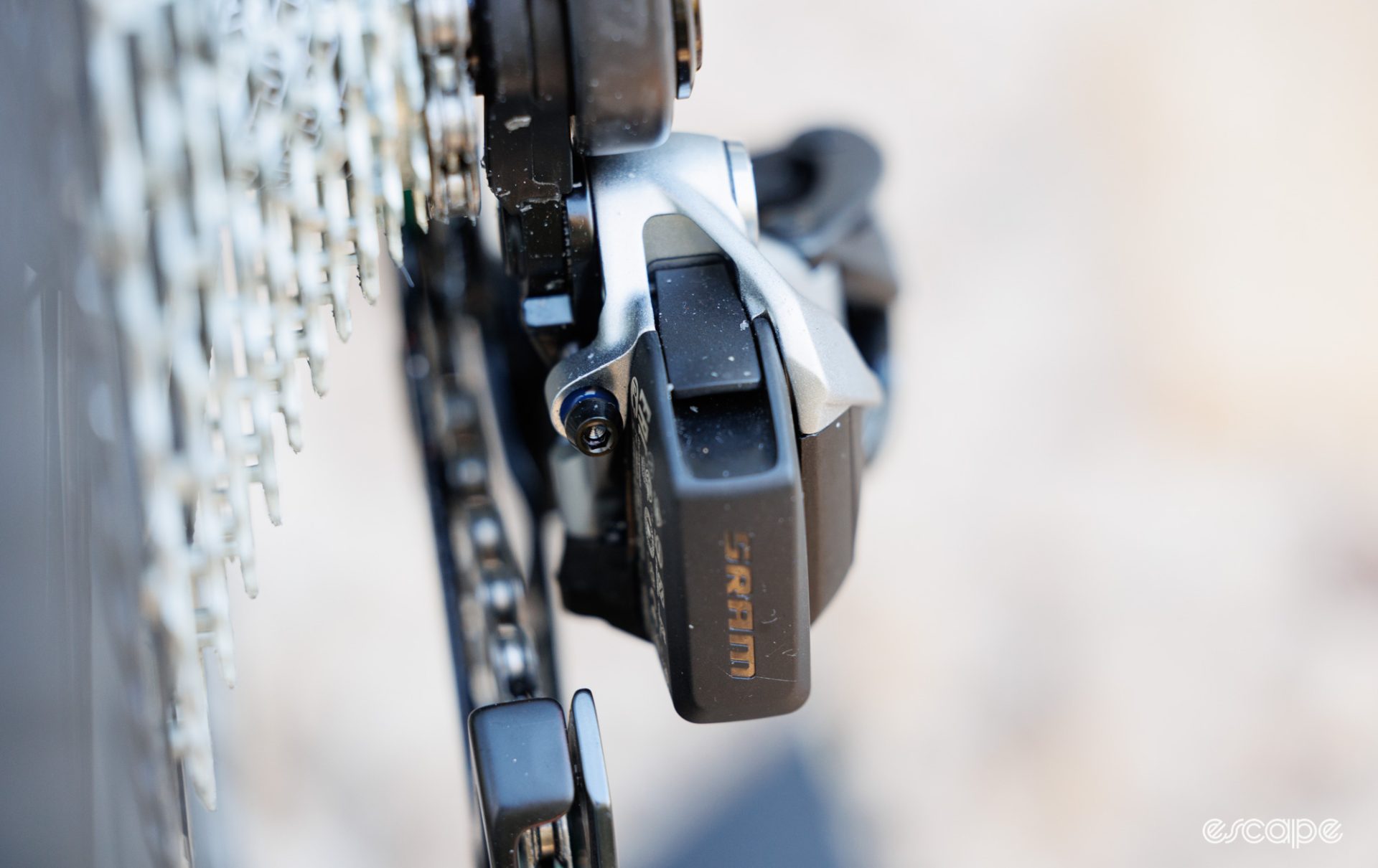
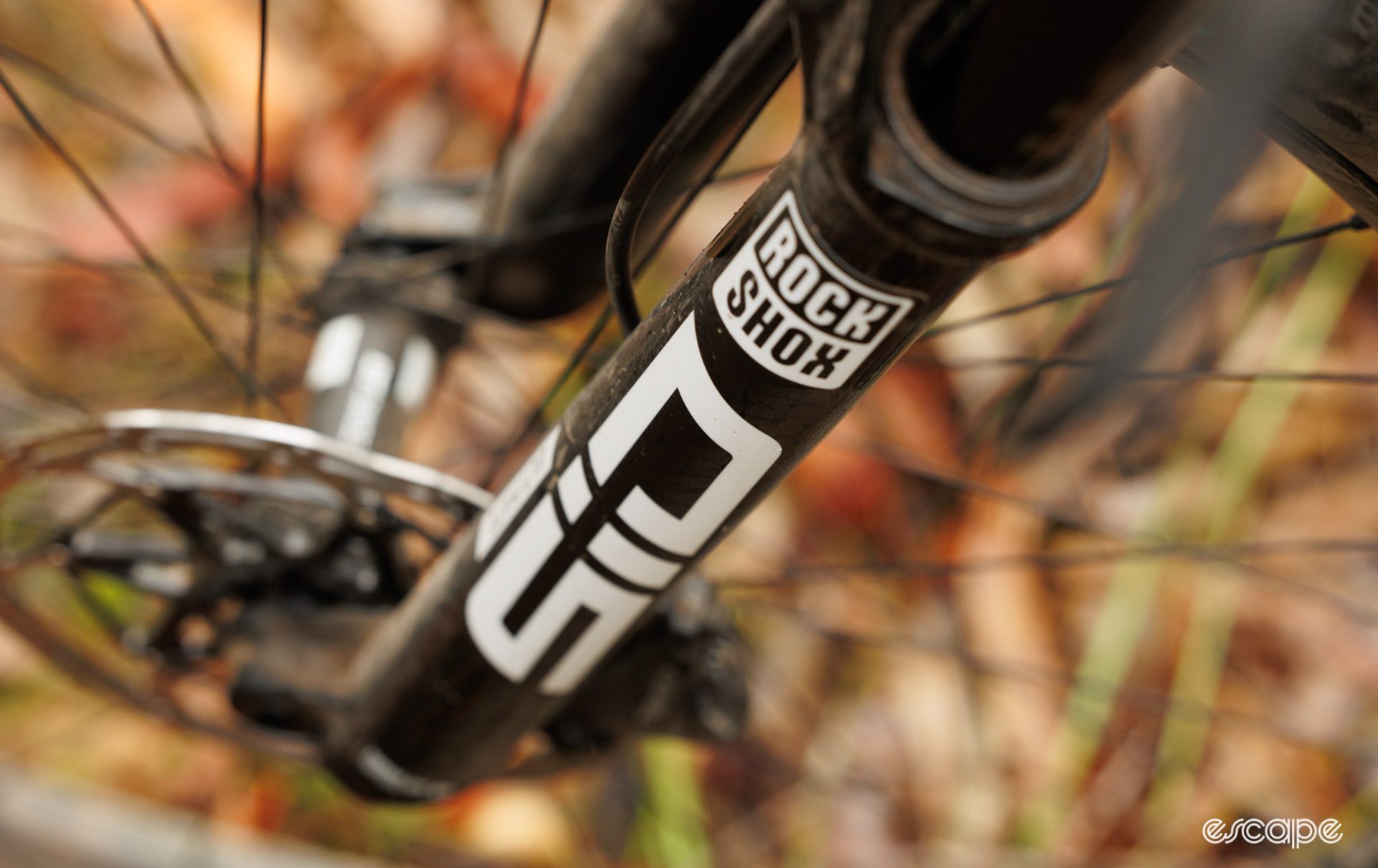
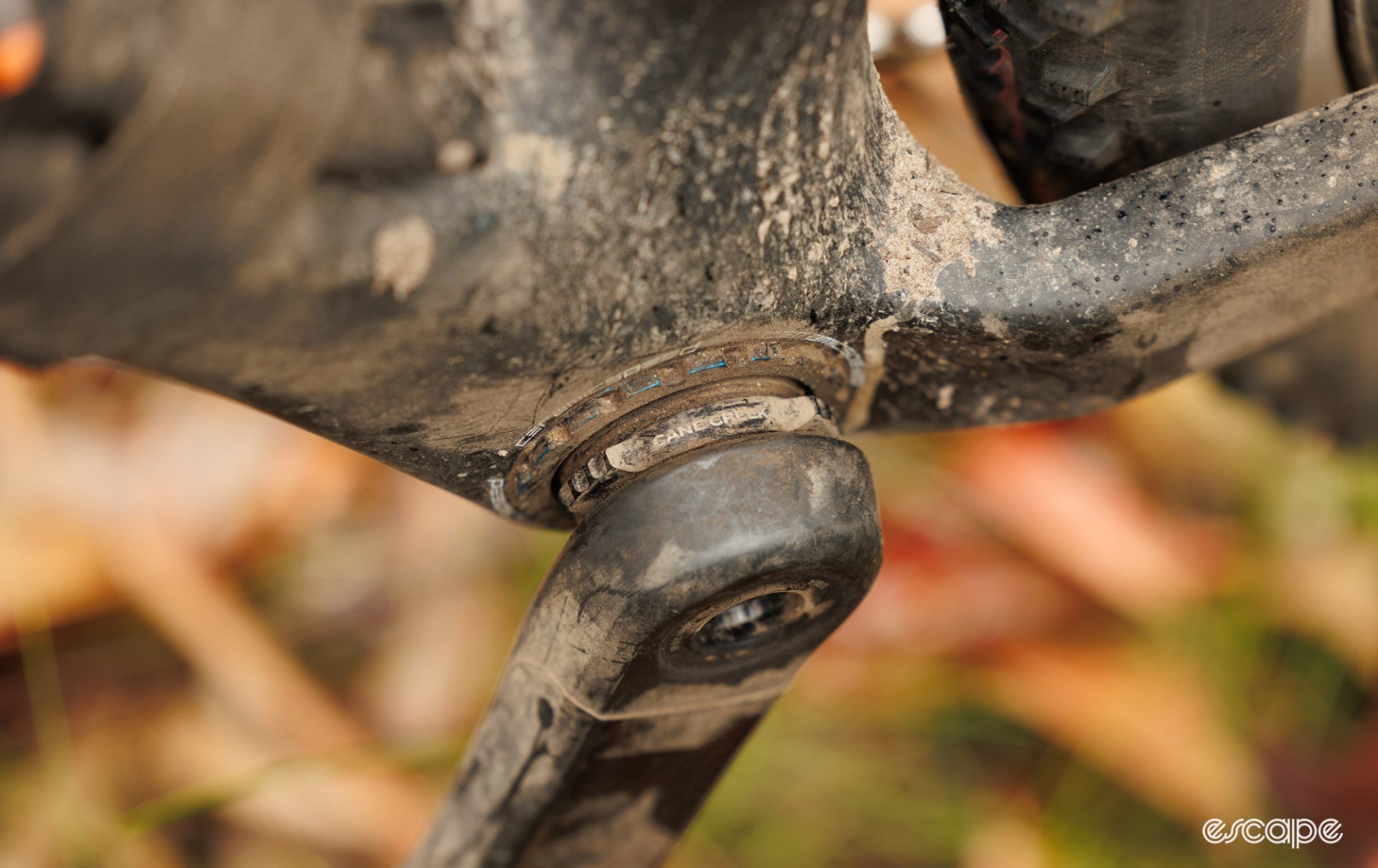
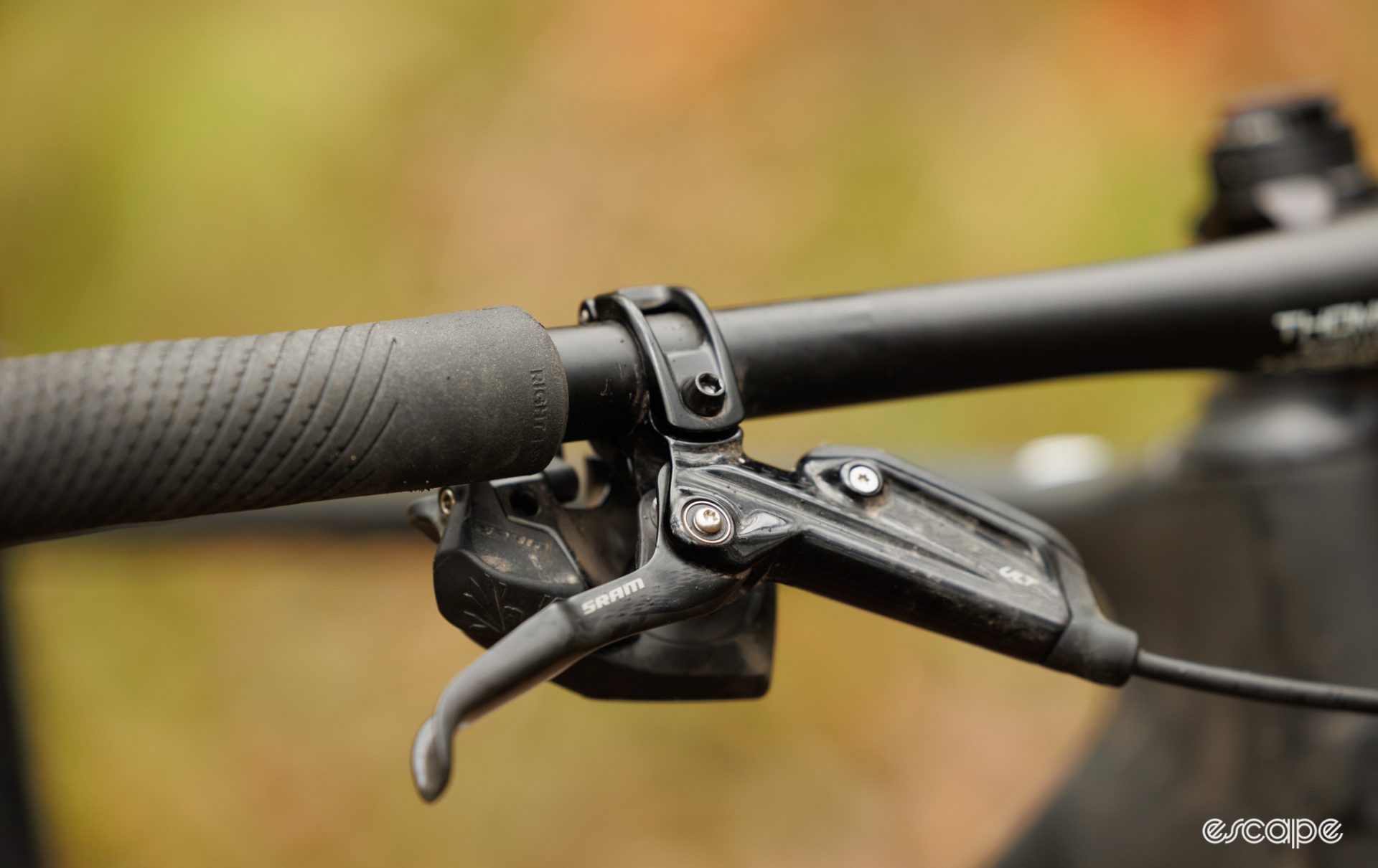

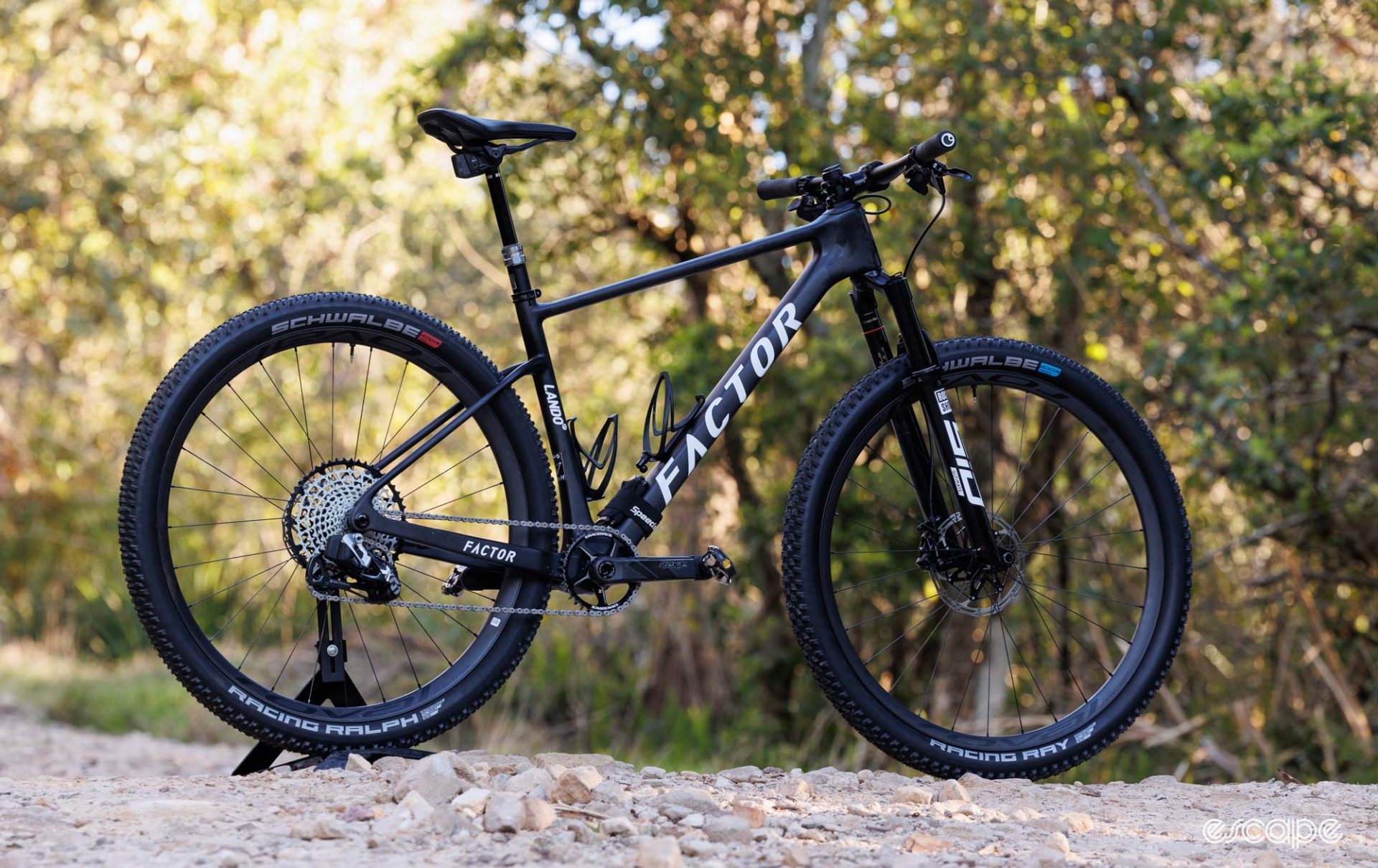
Did we do a good job with this story?

